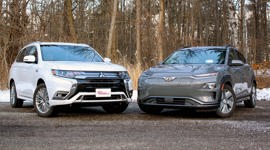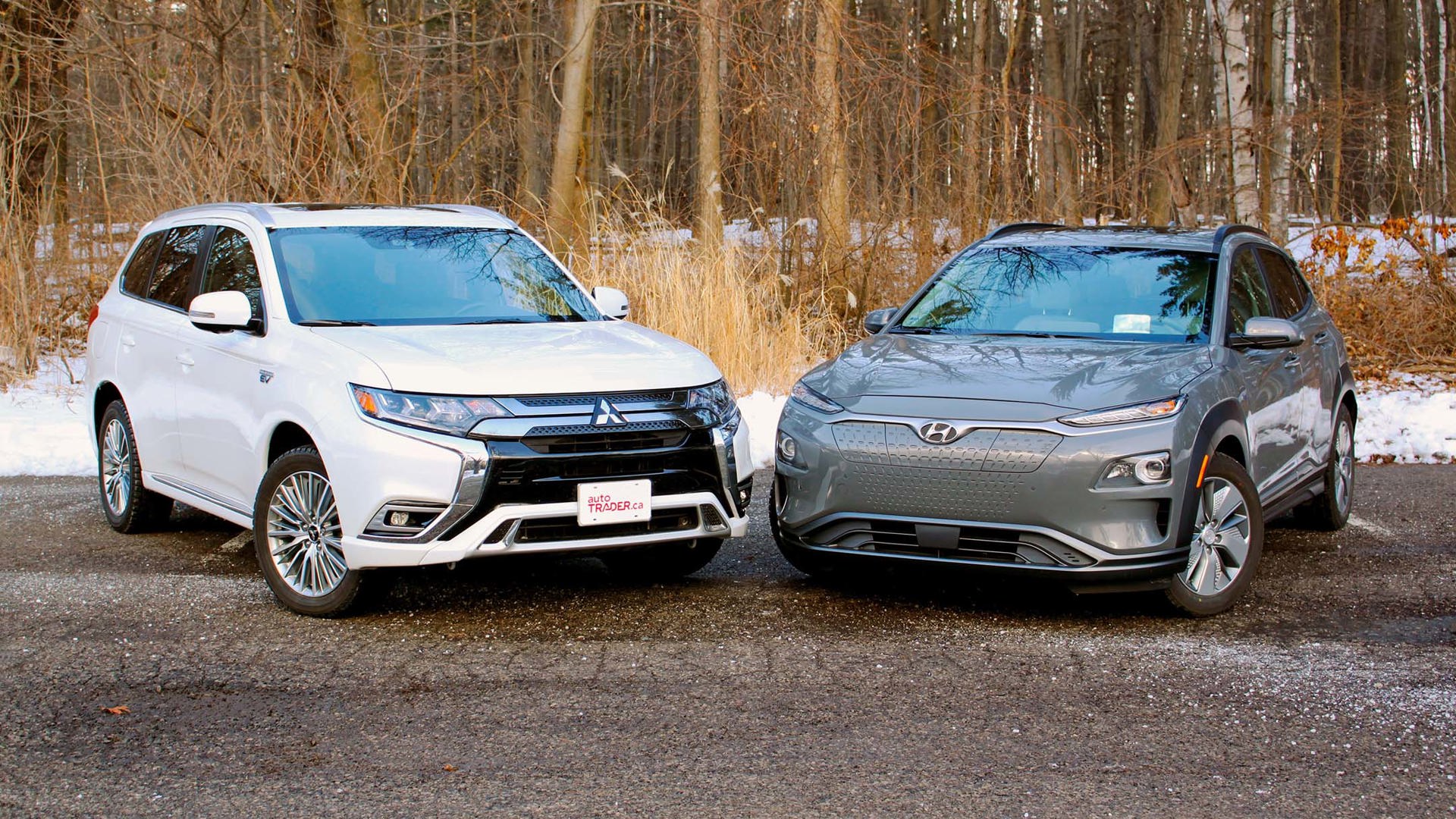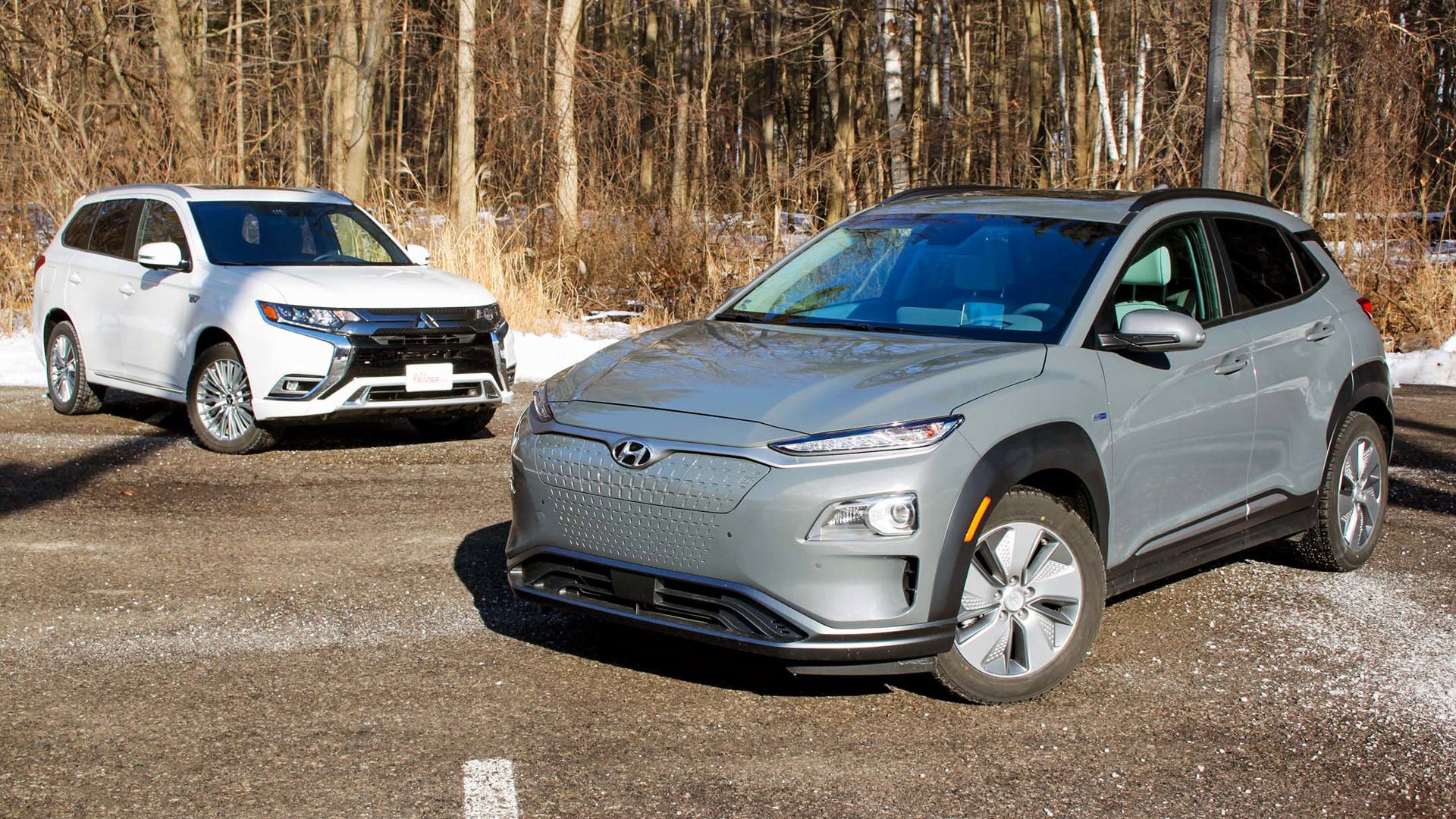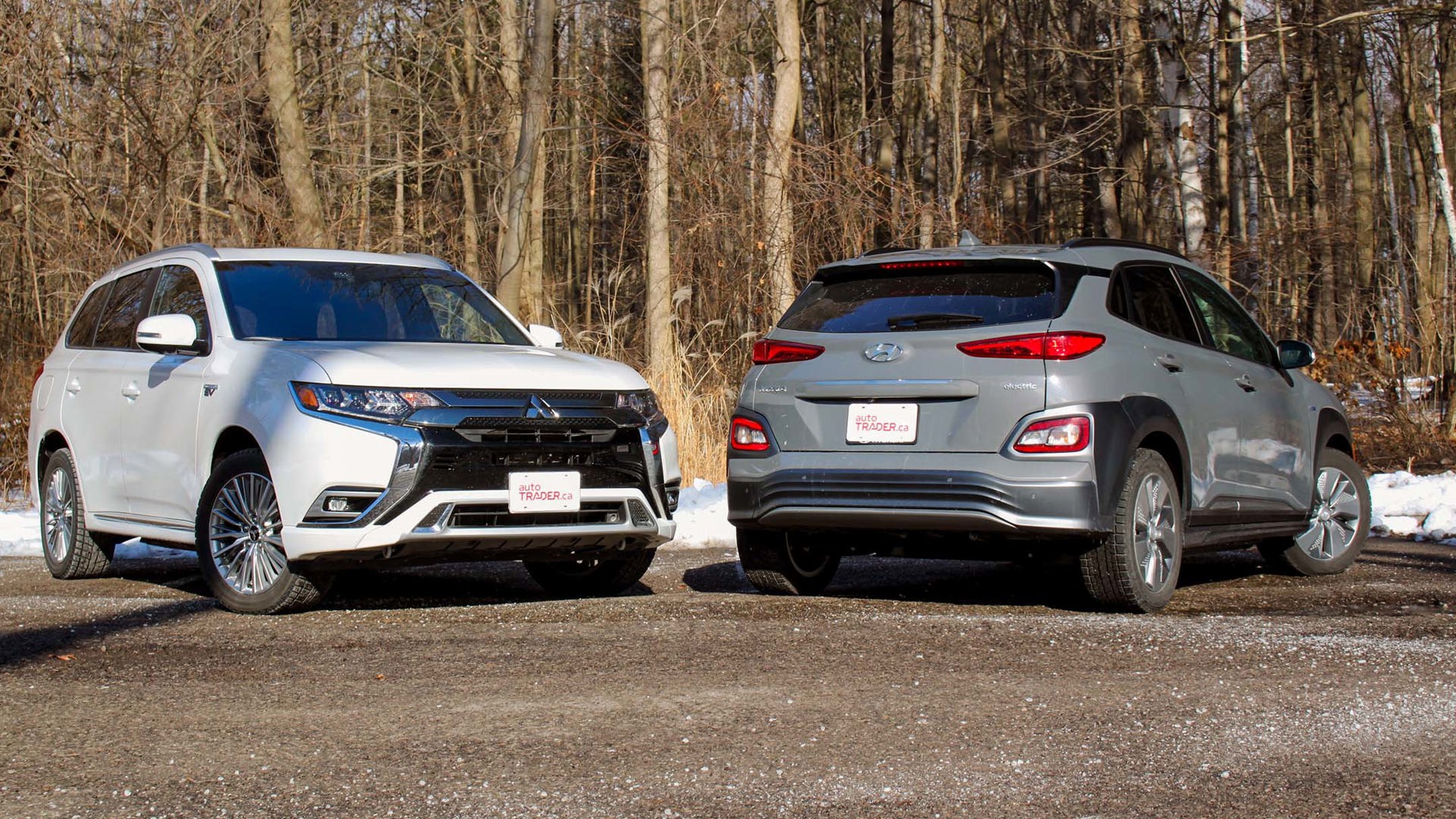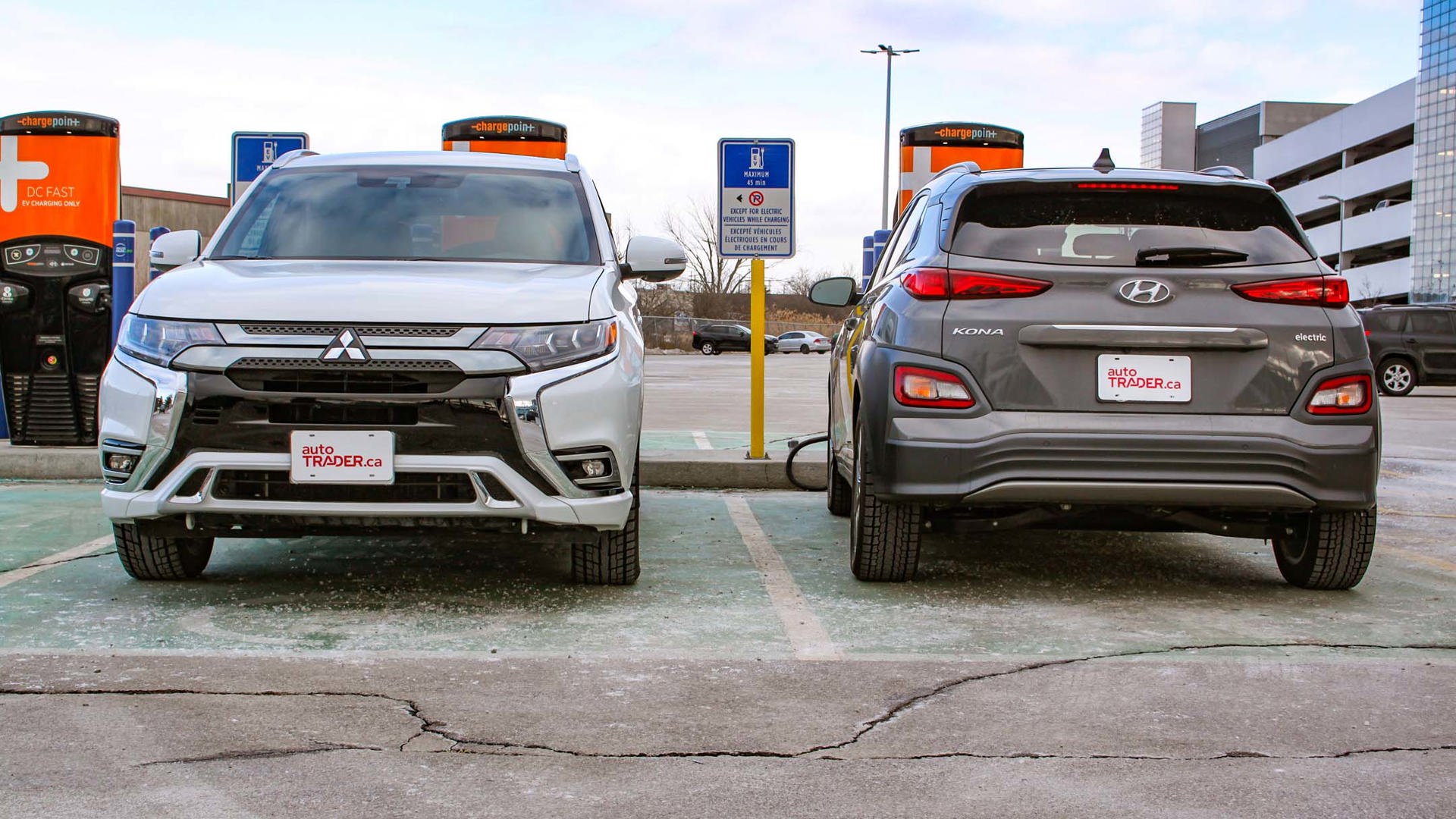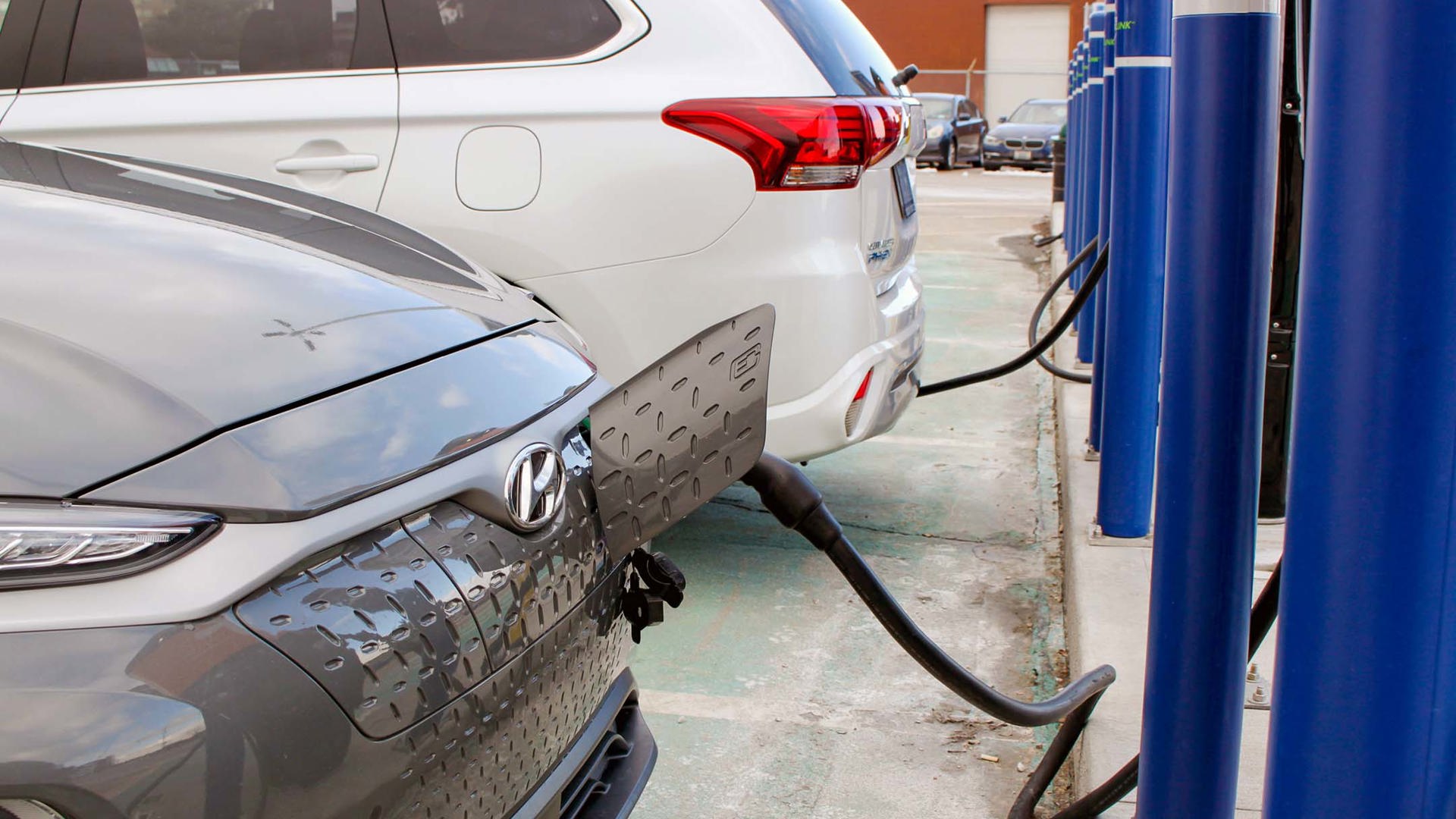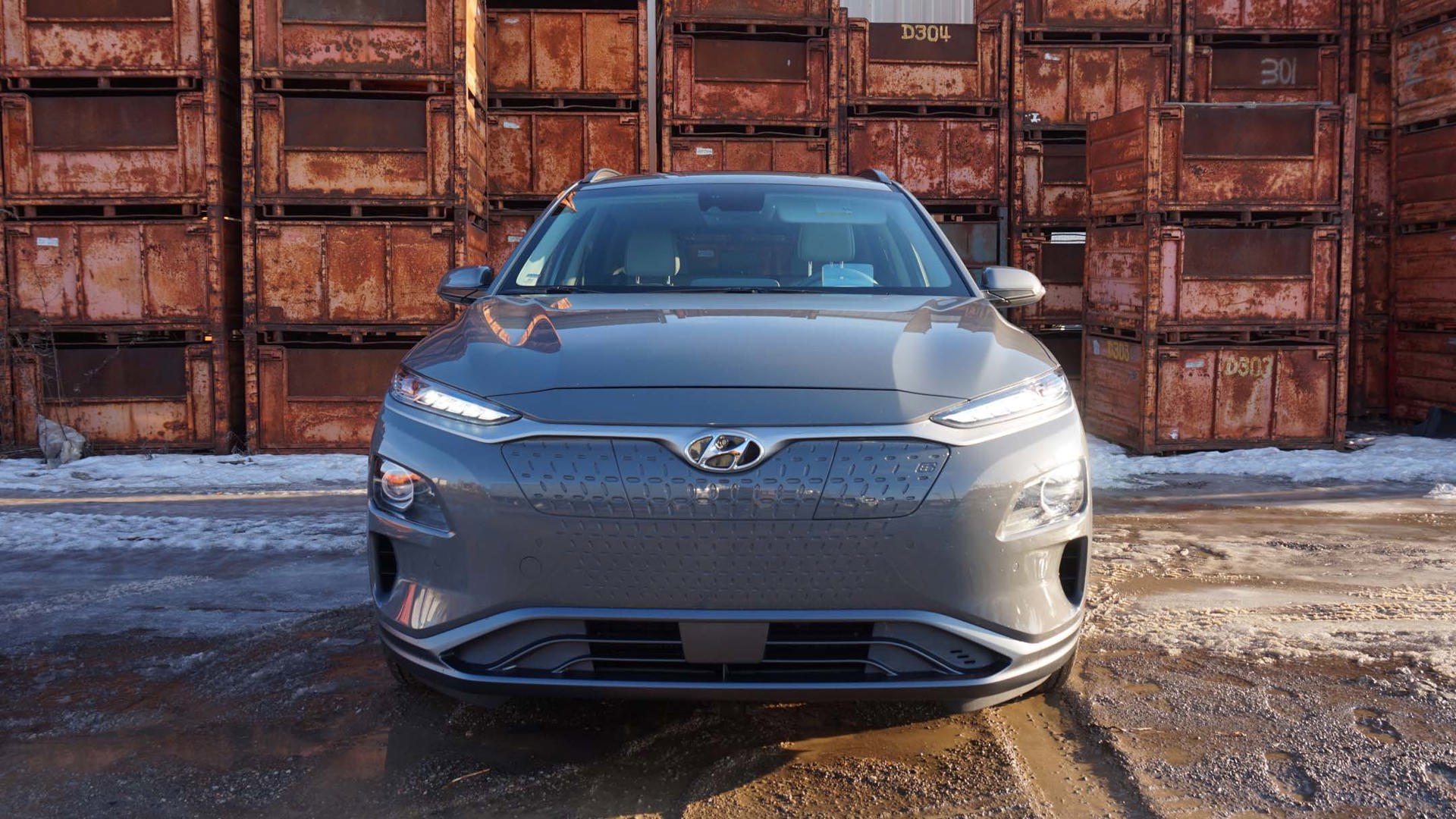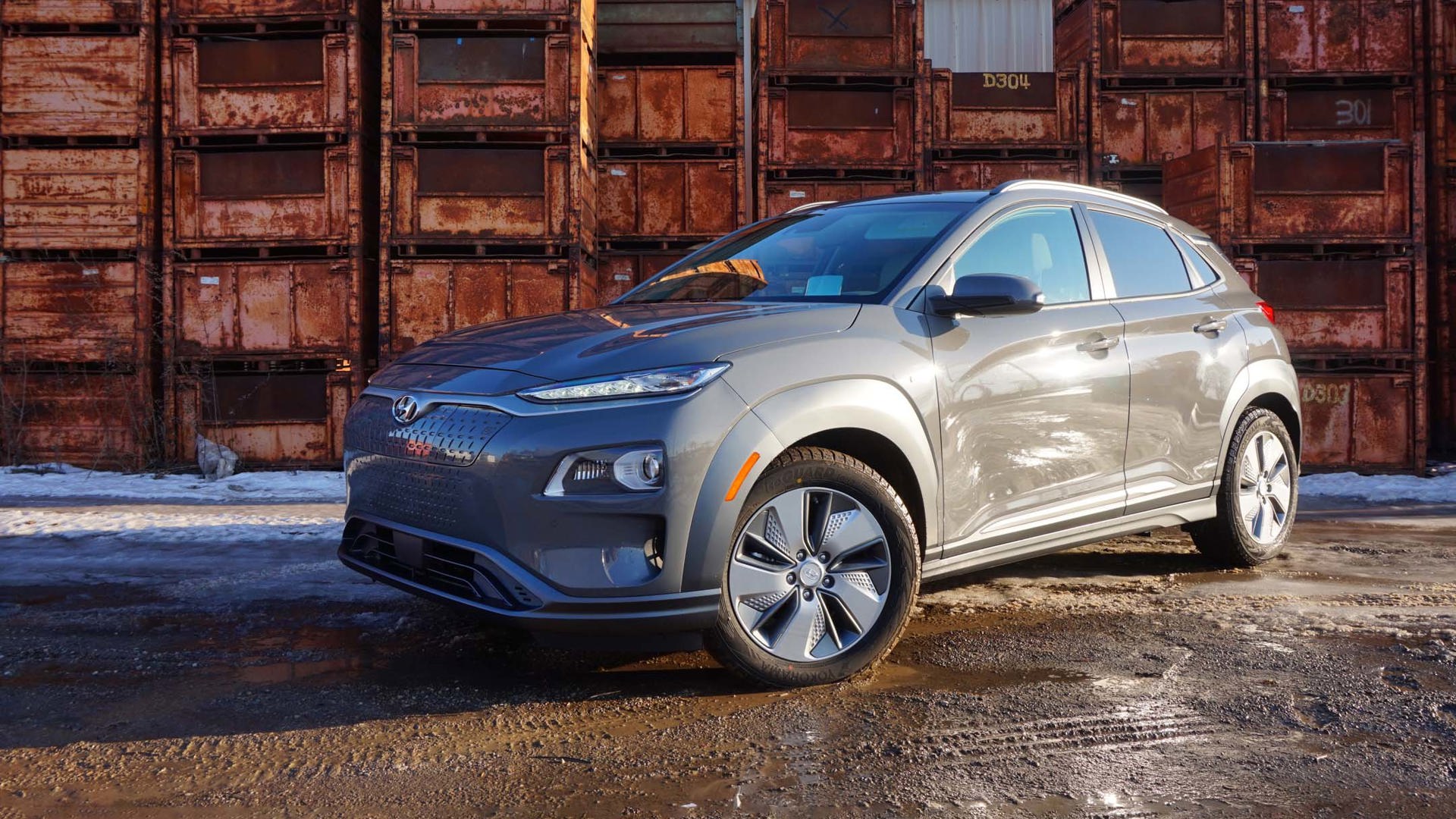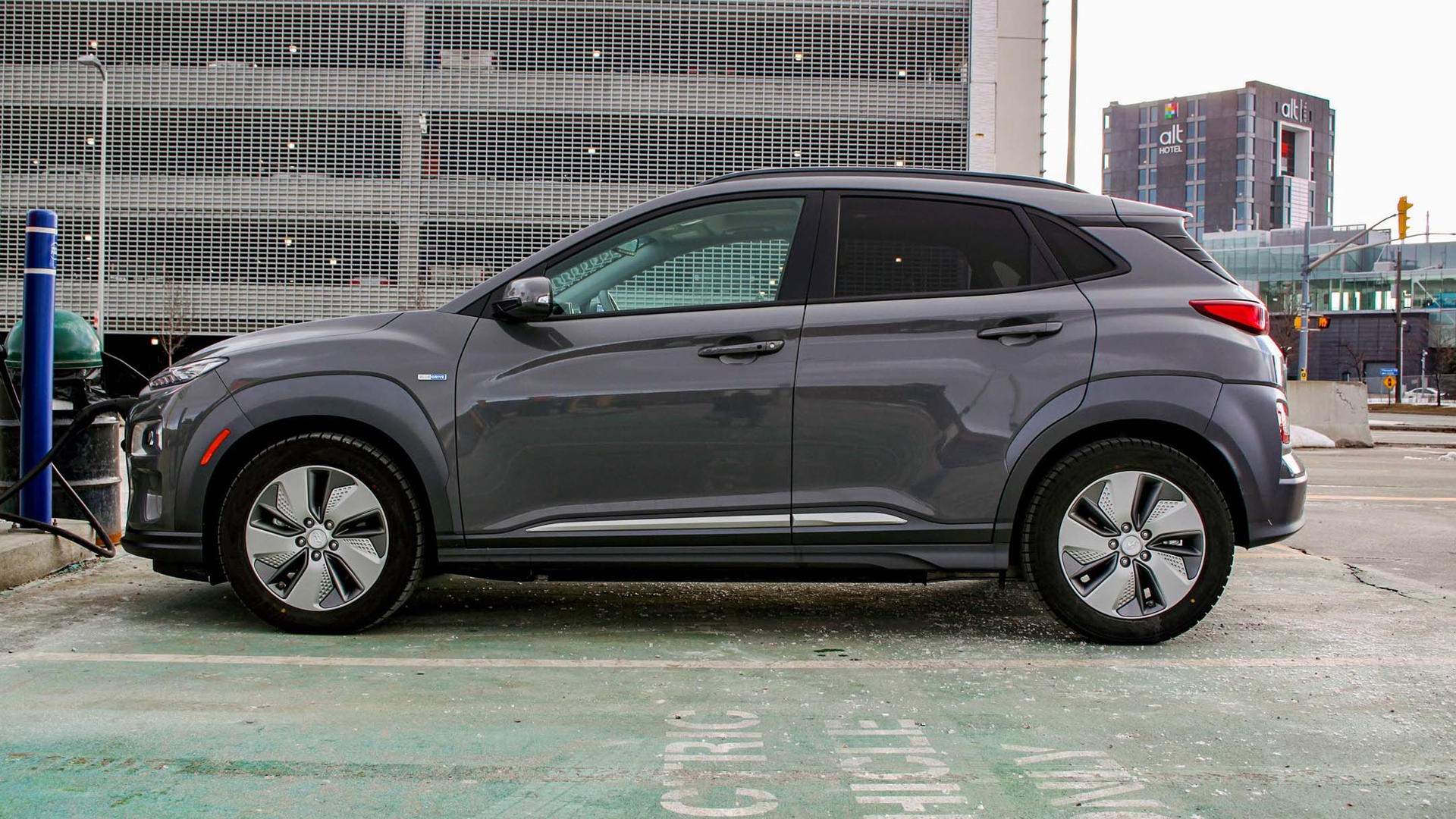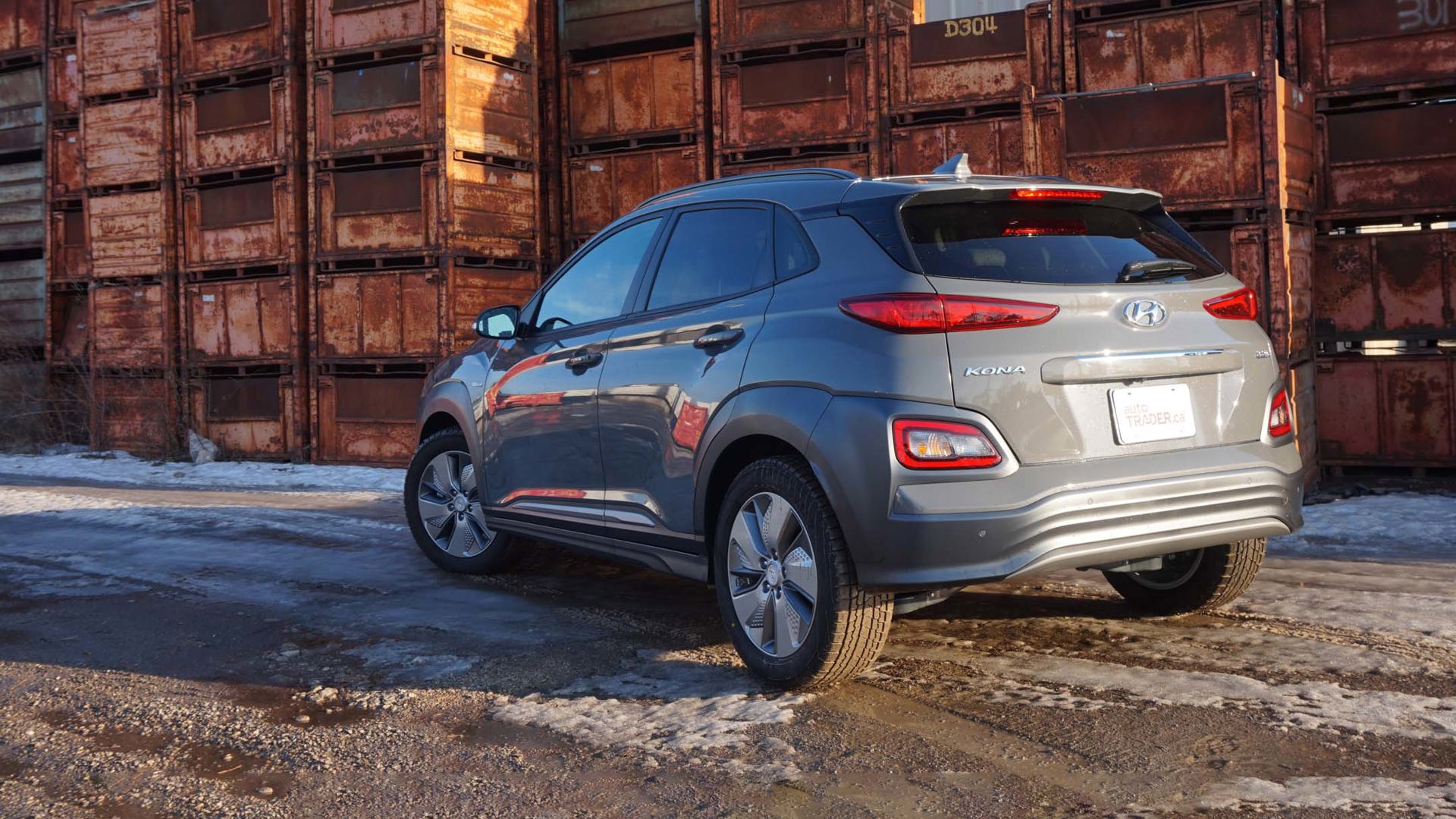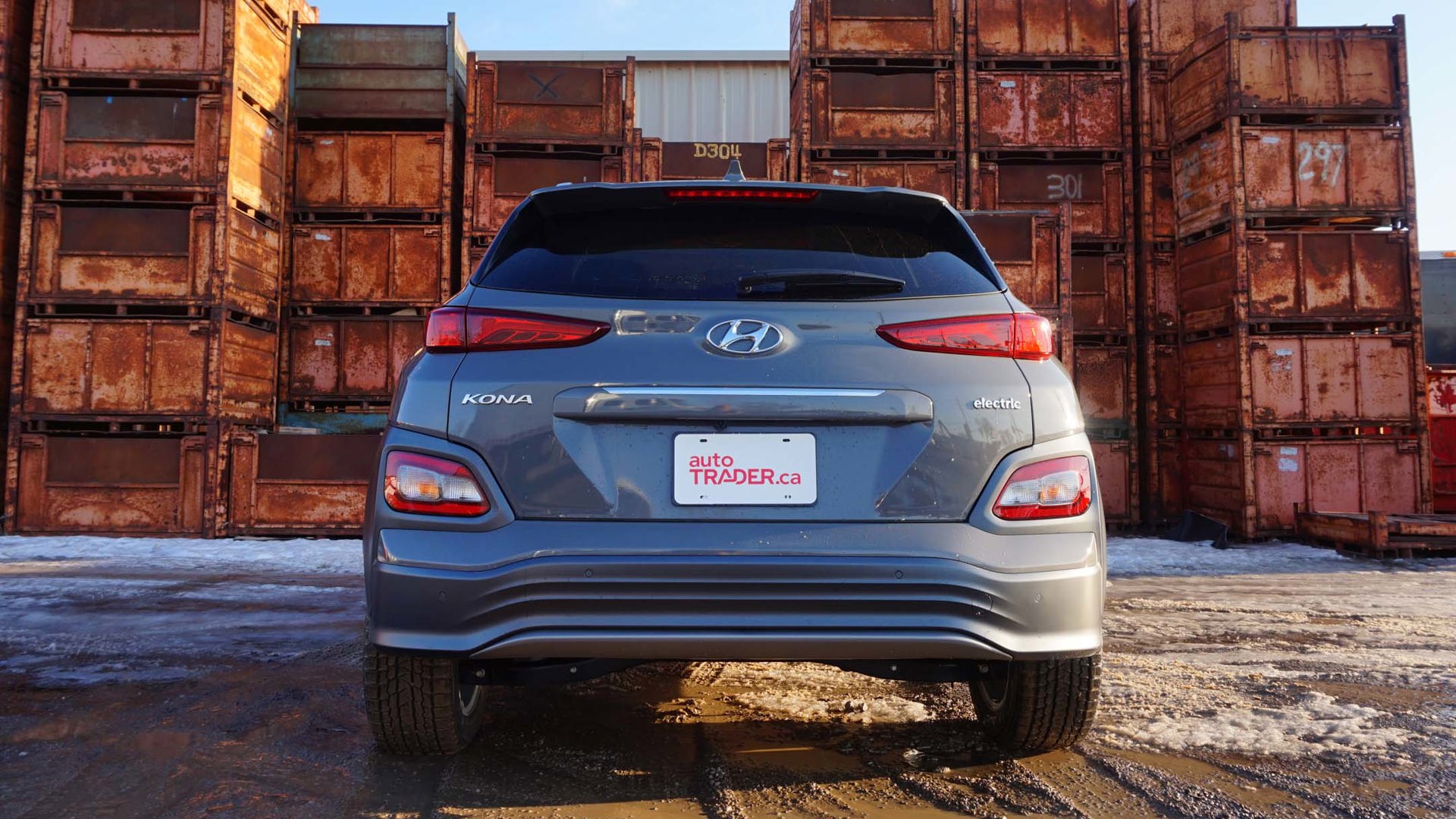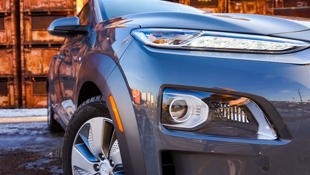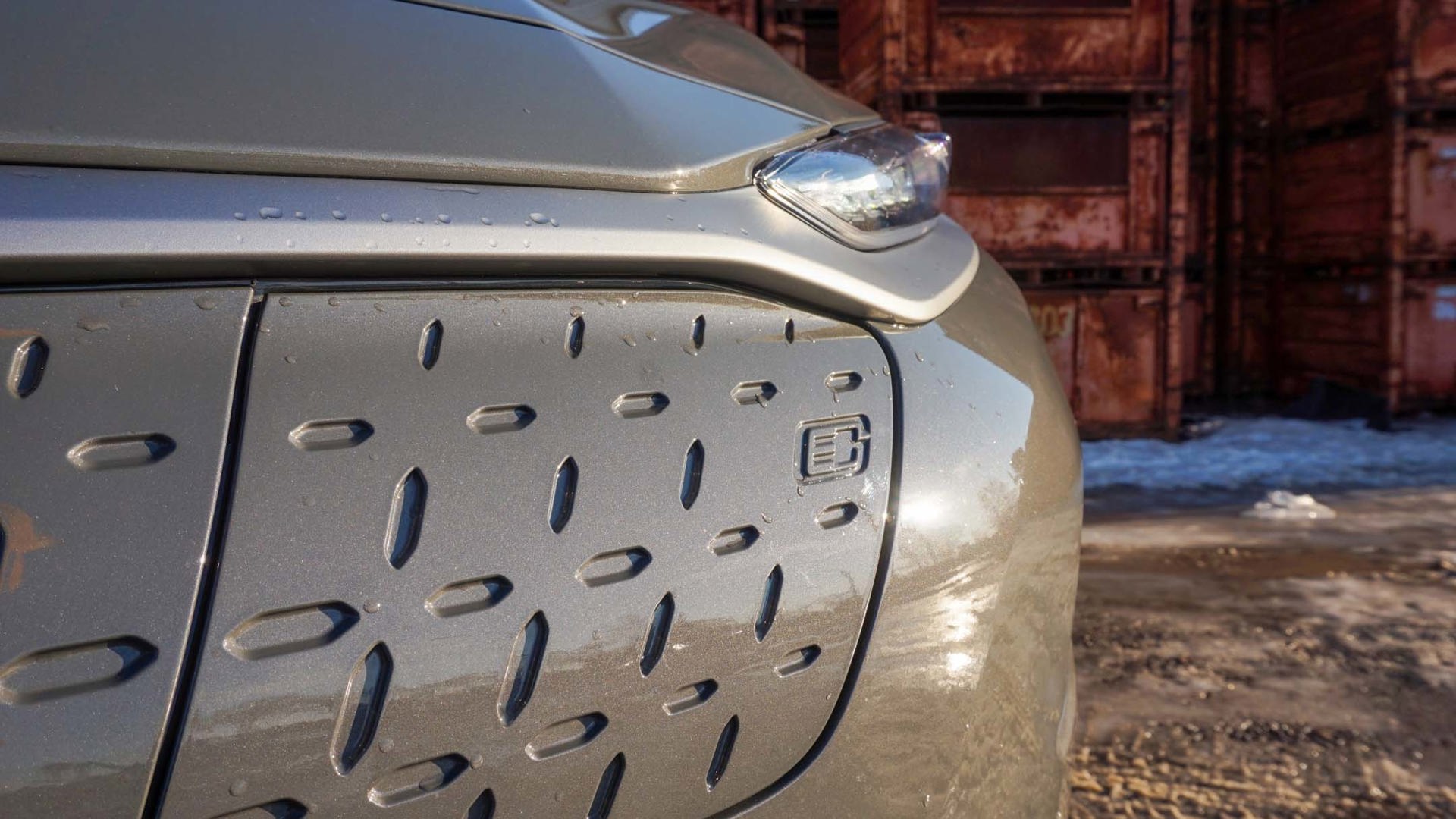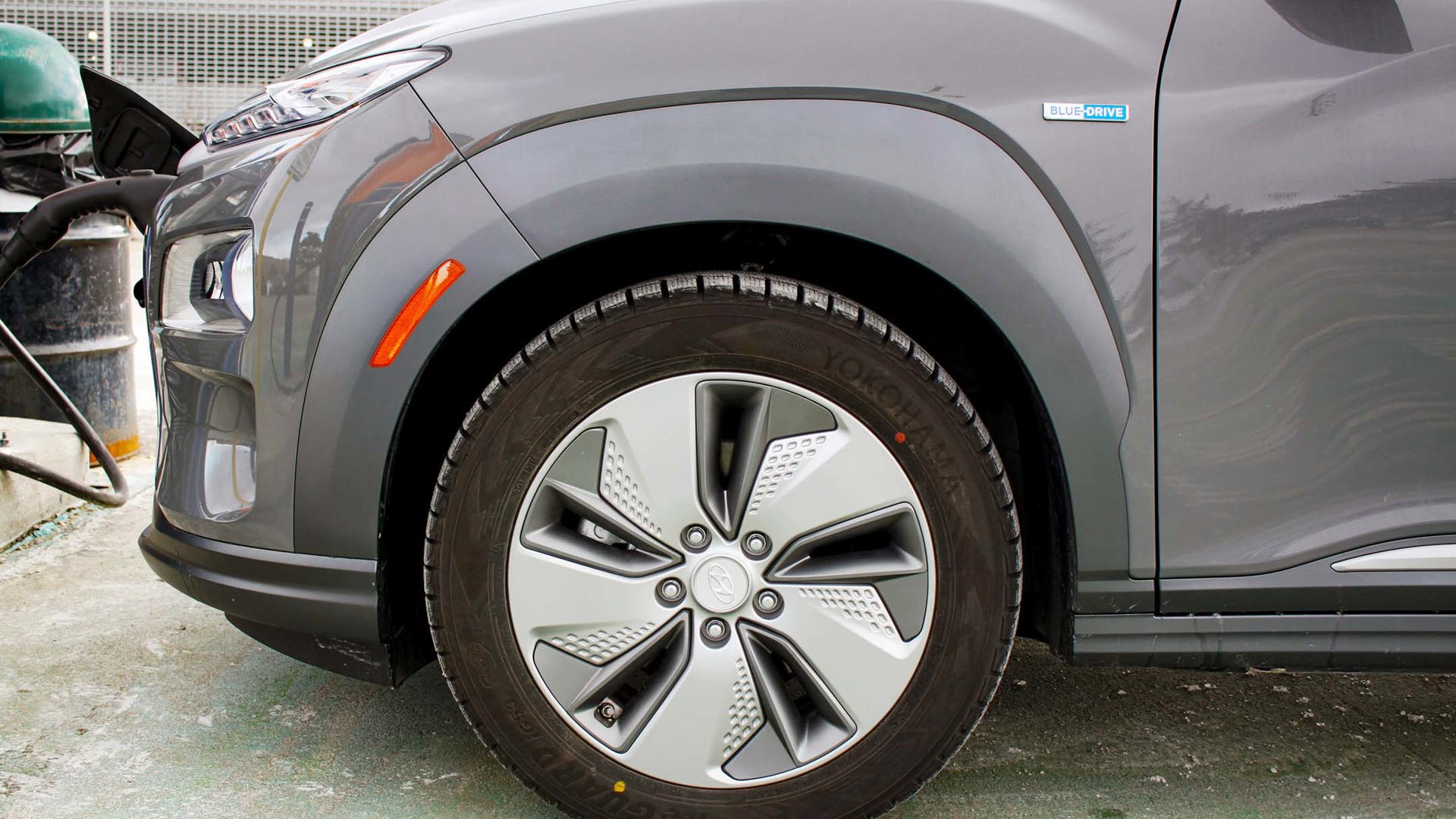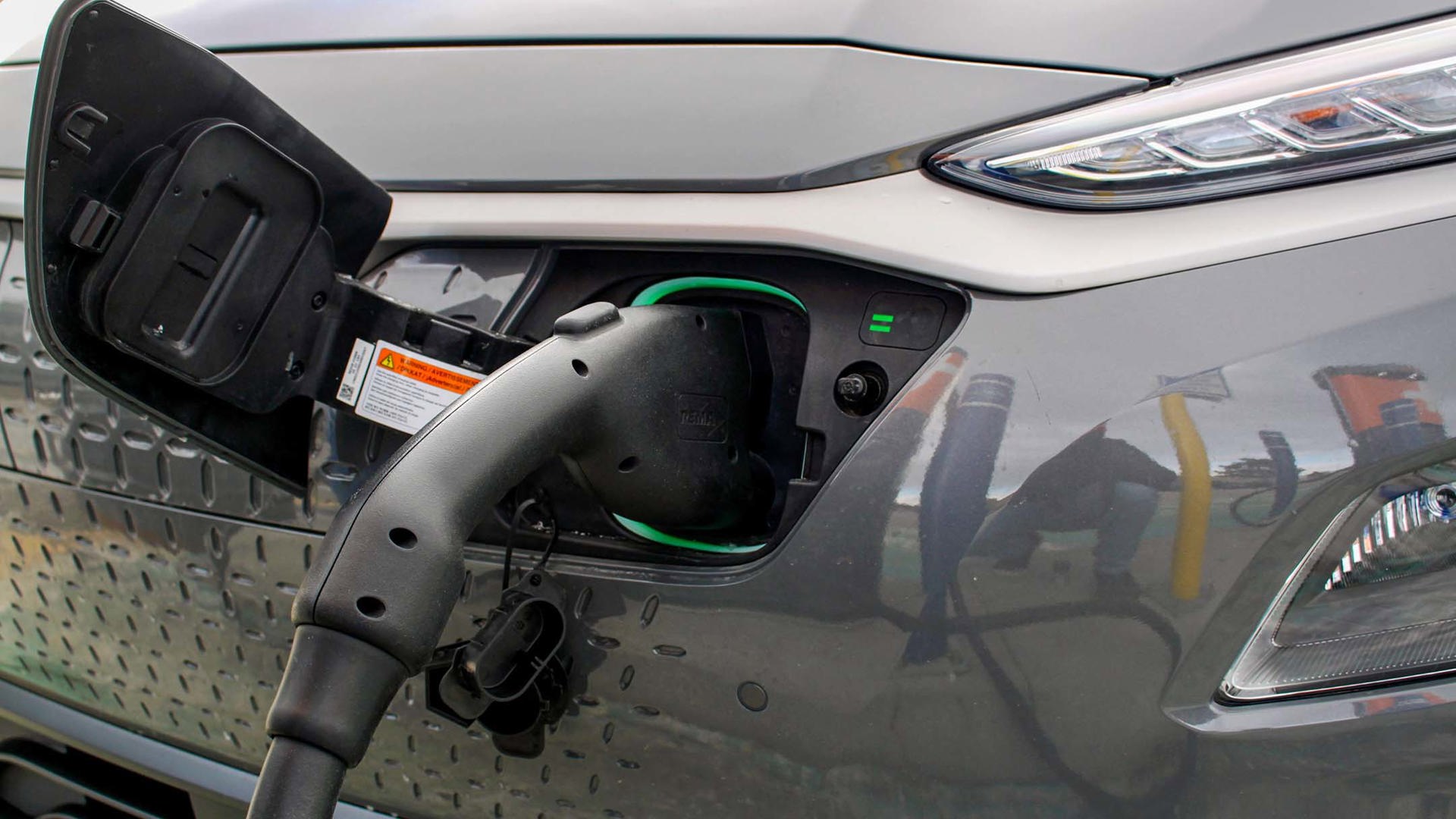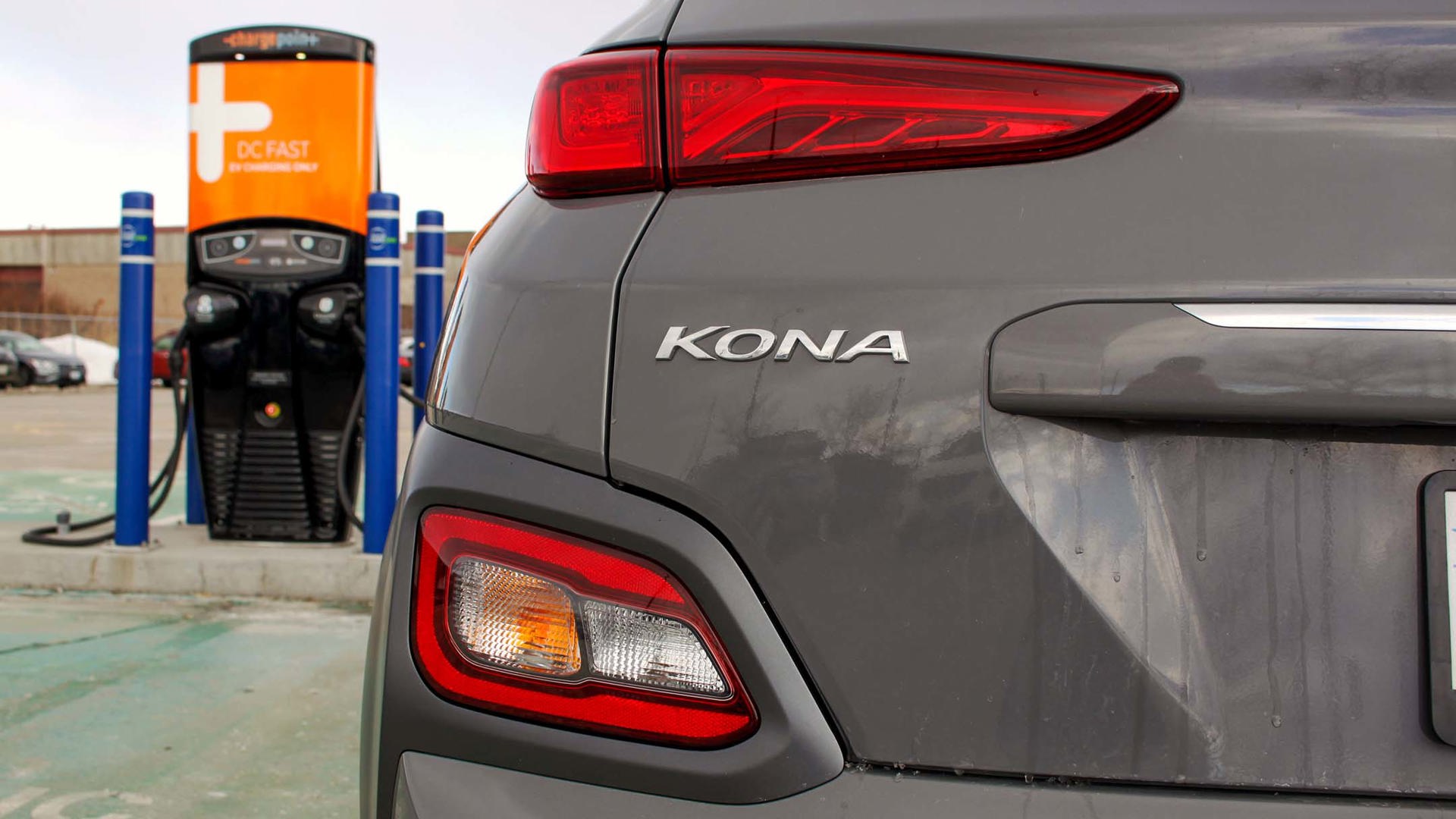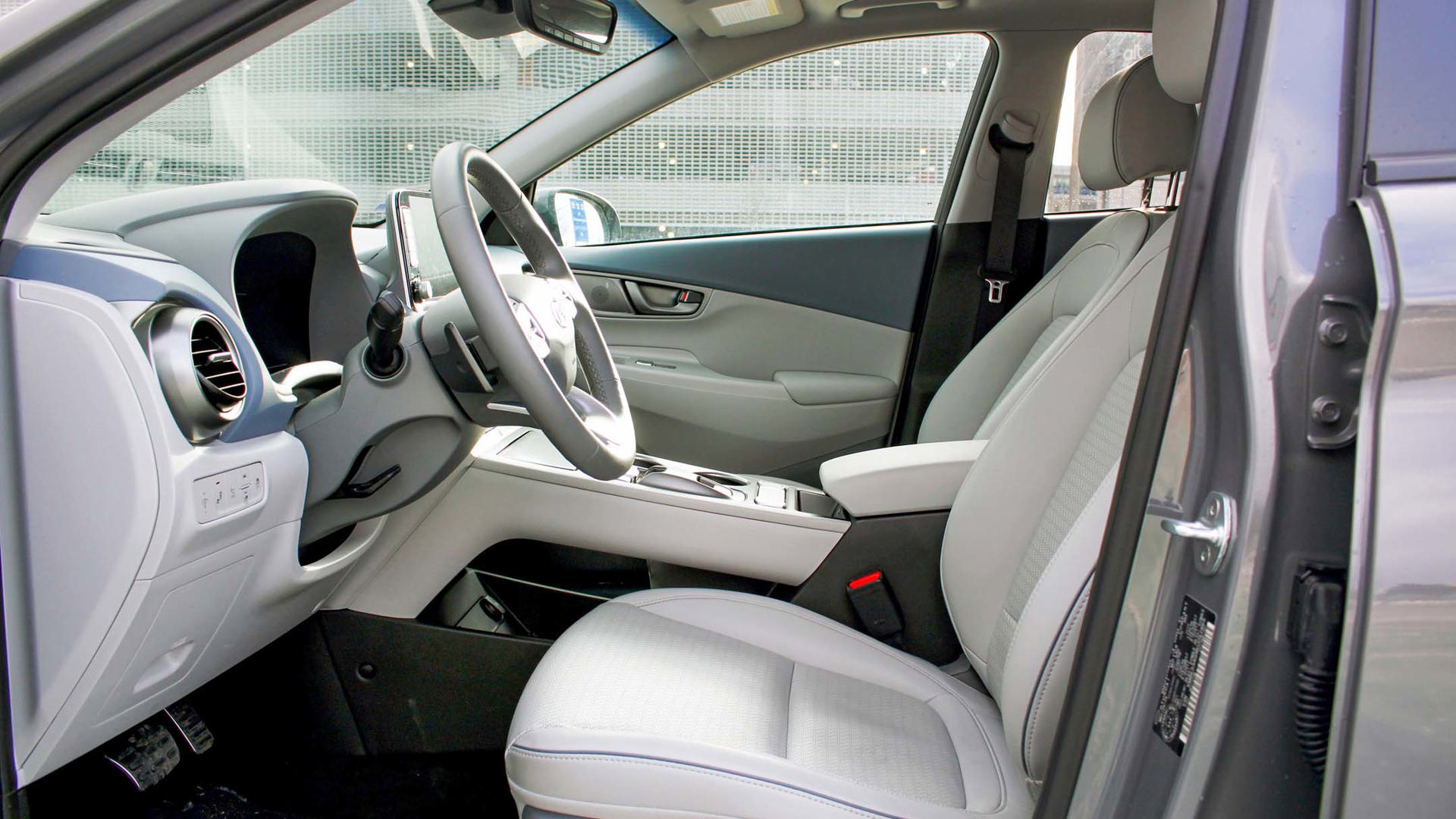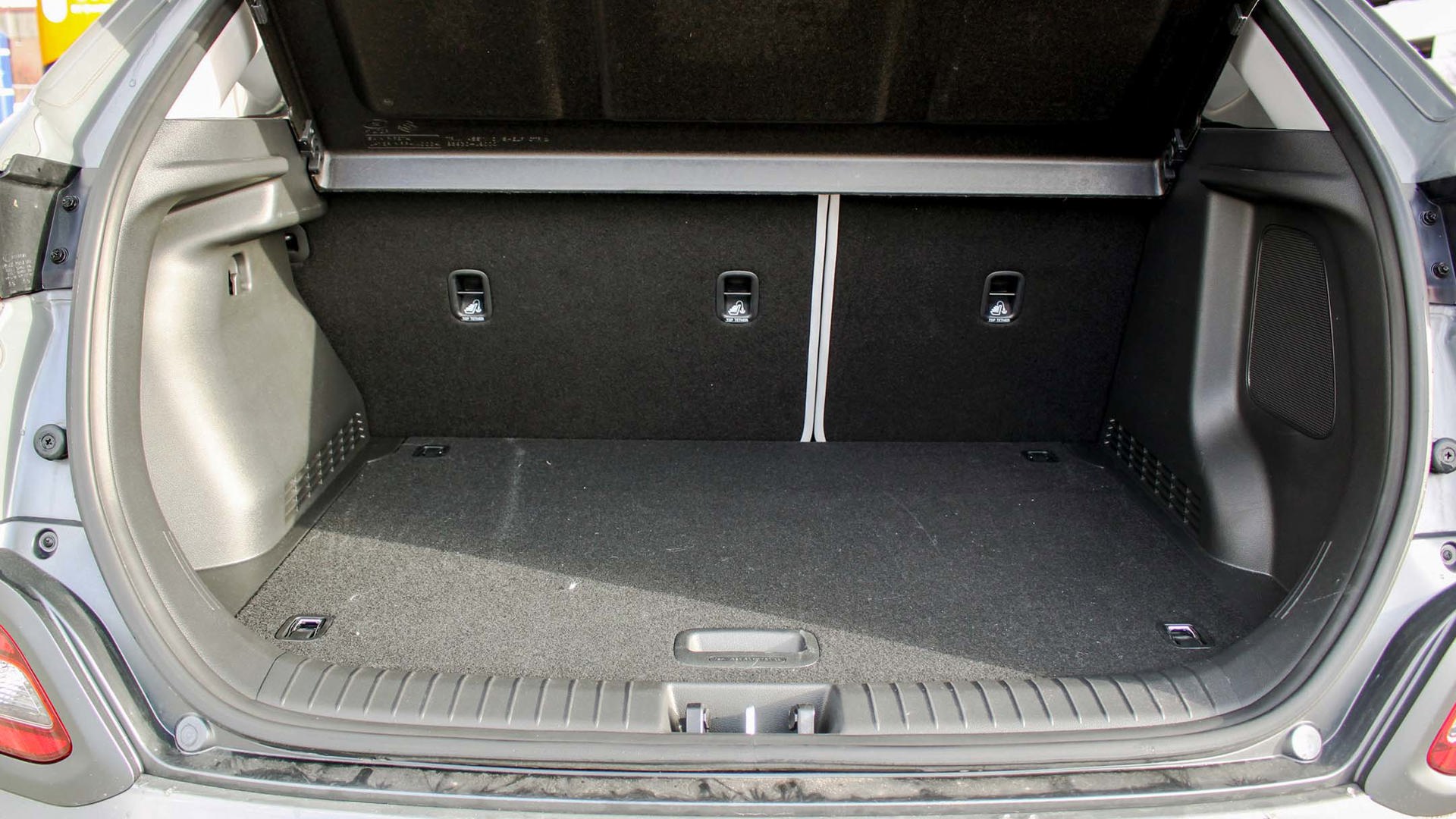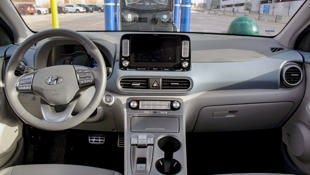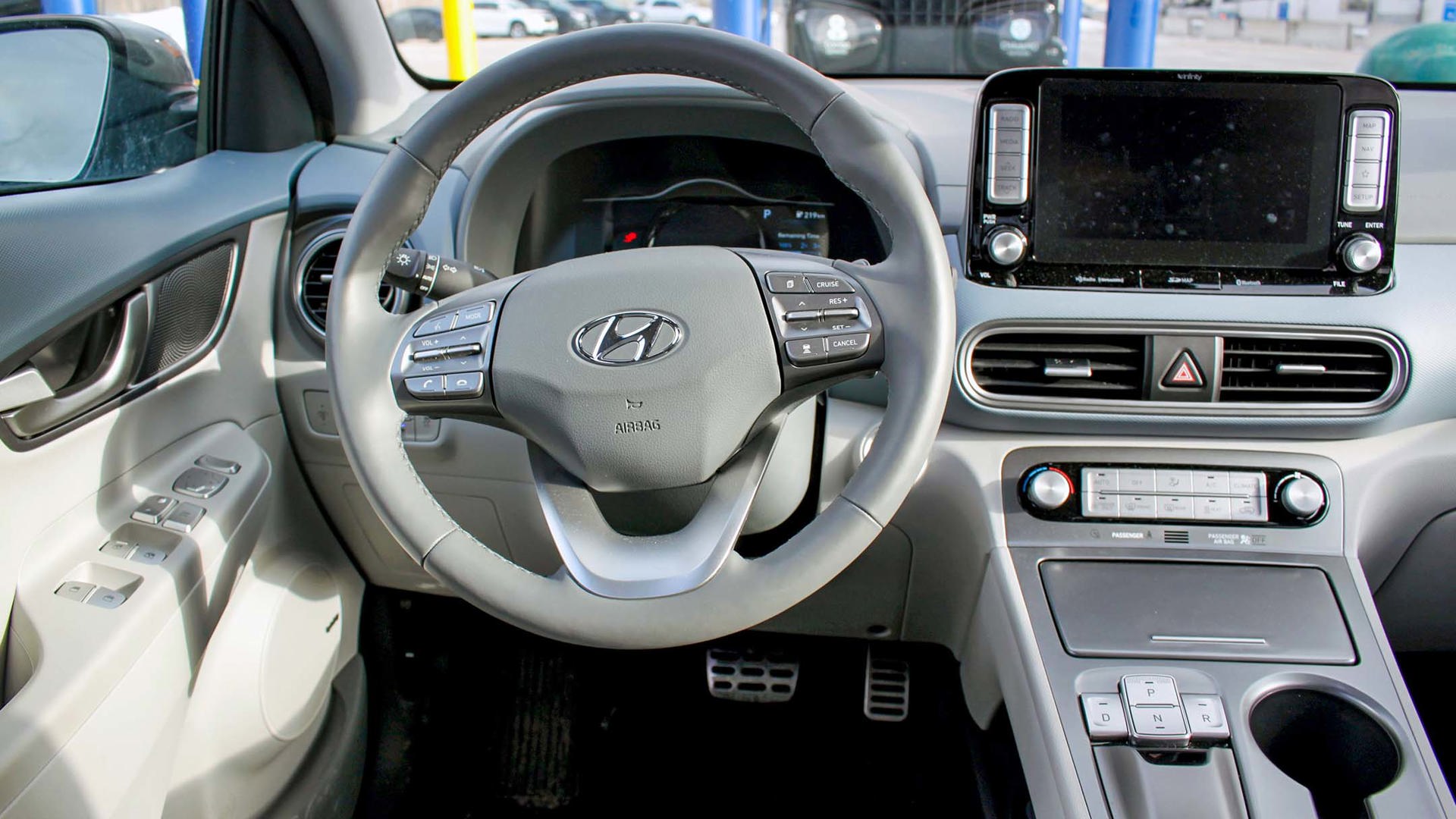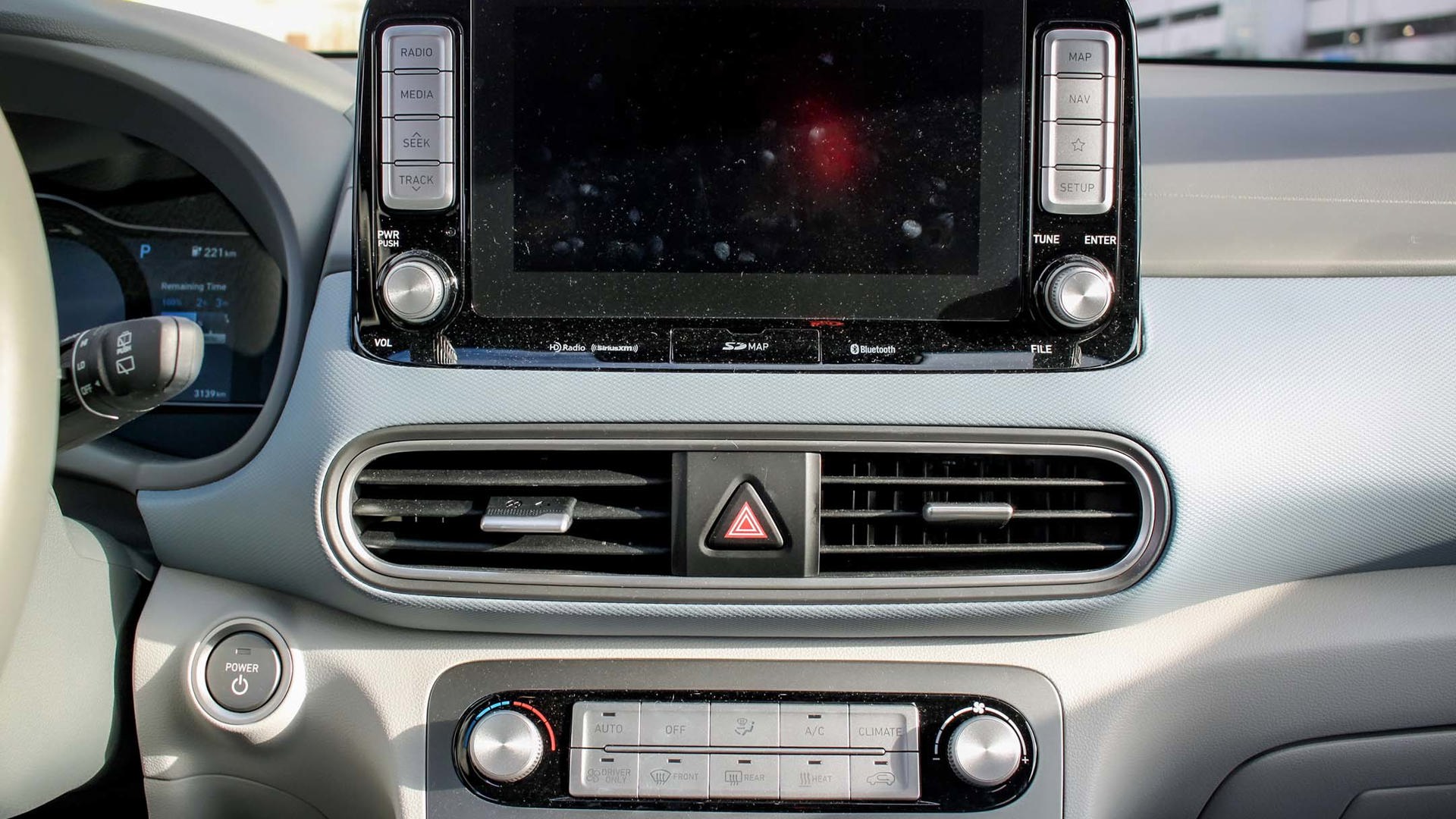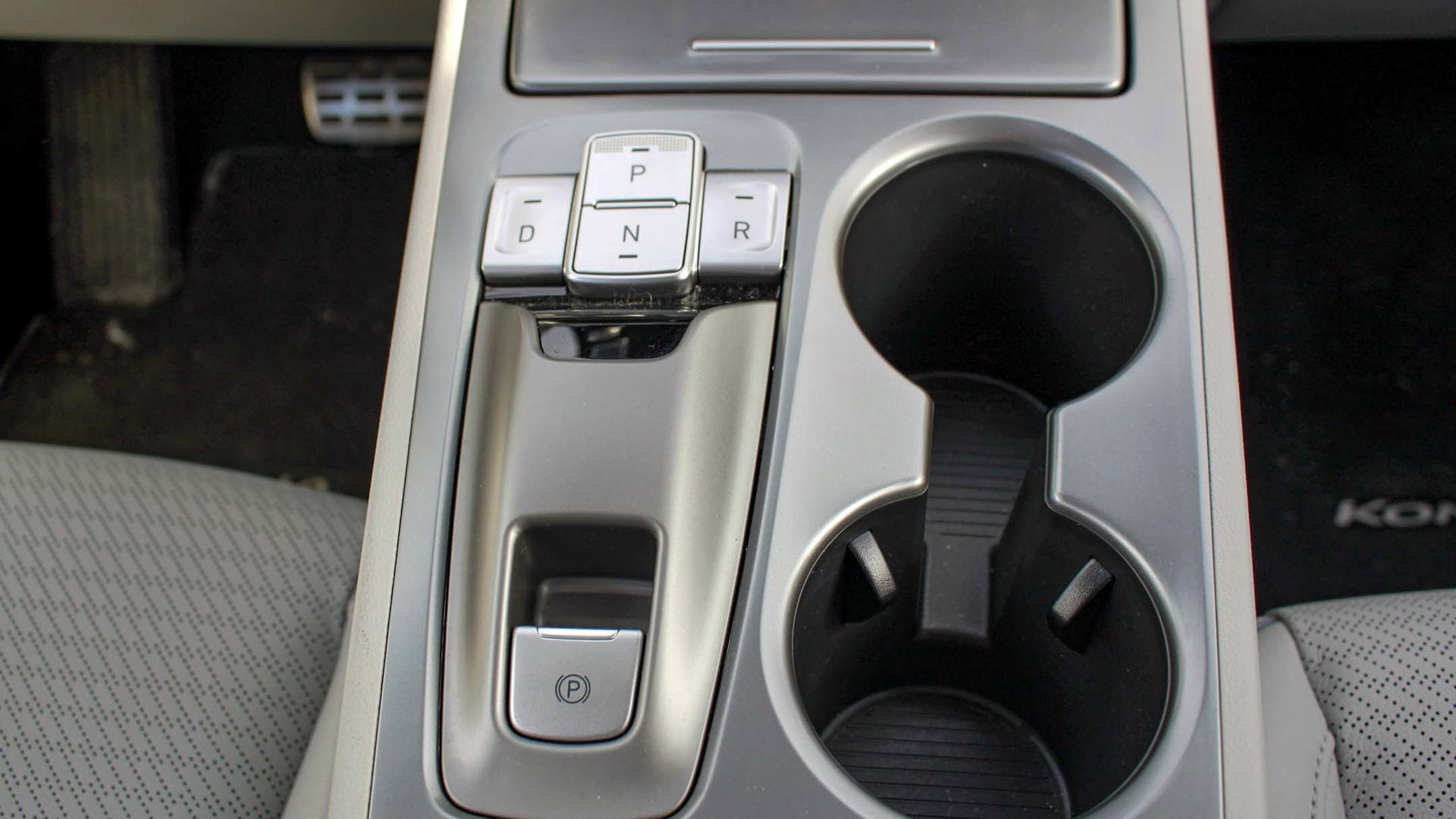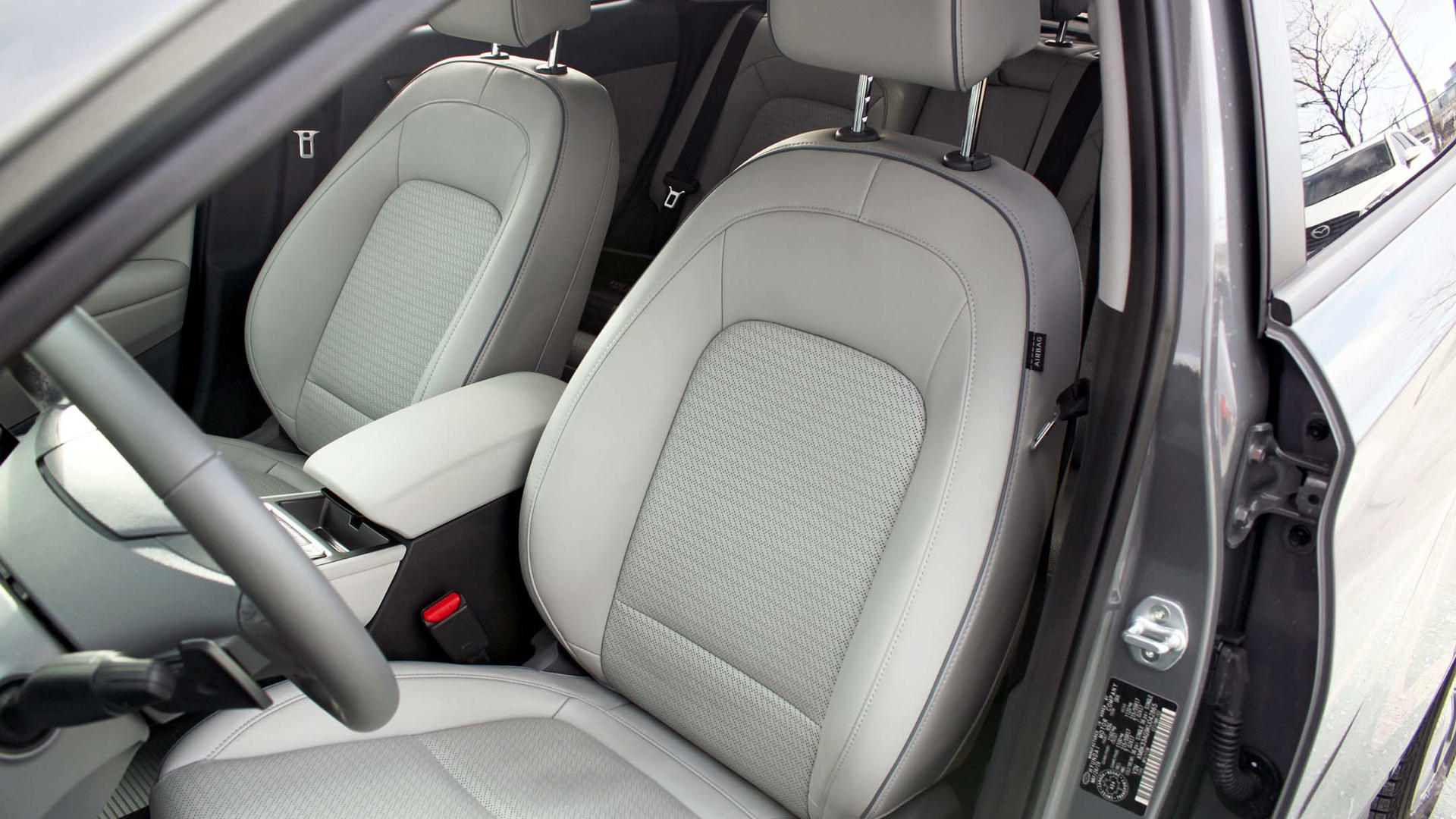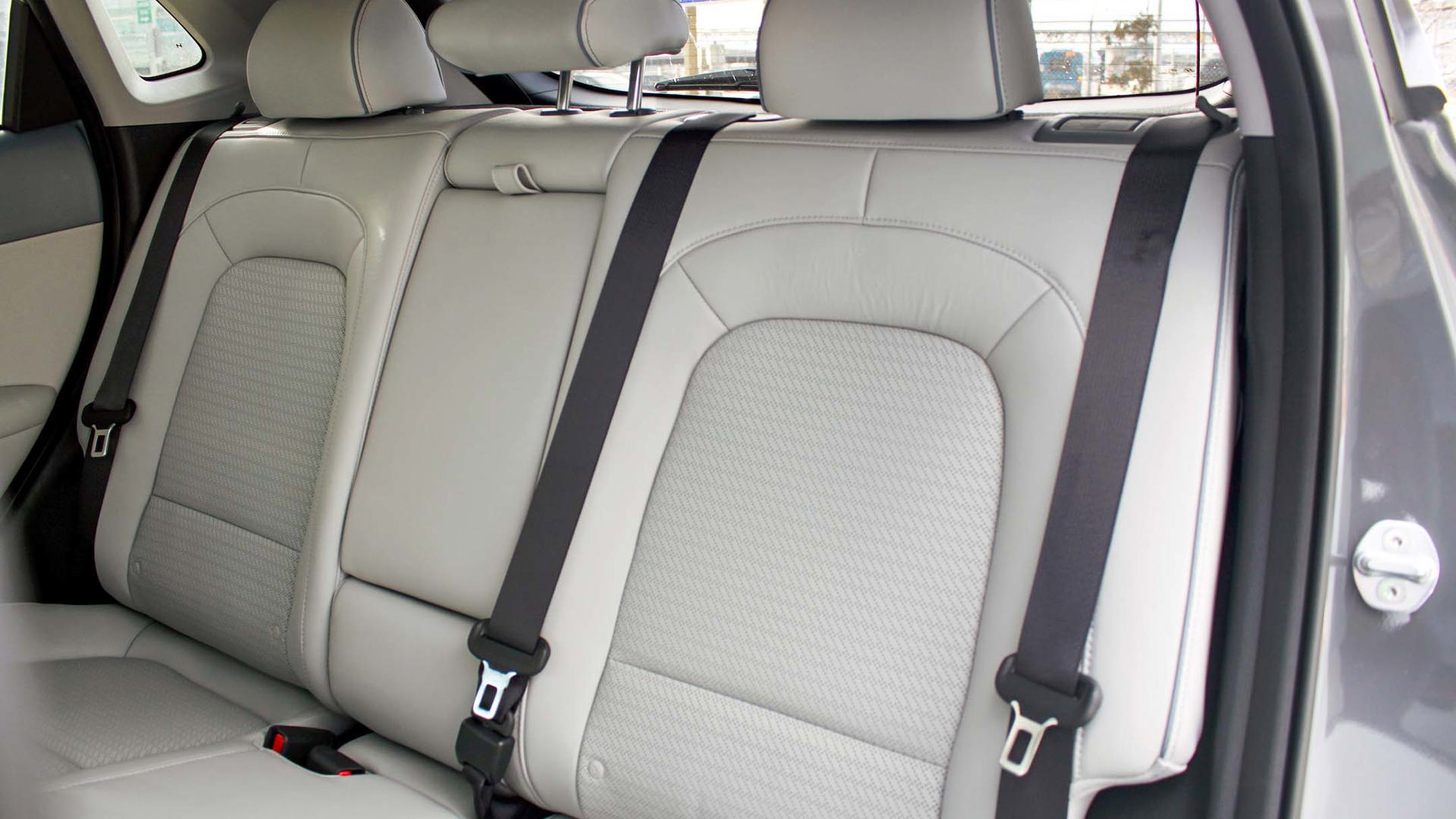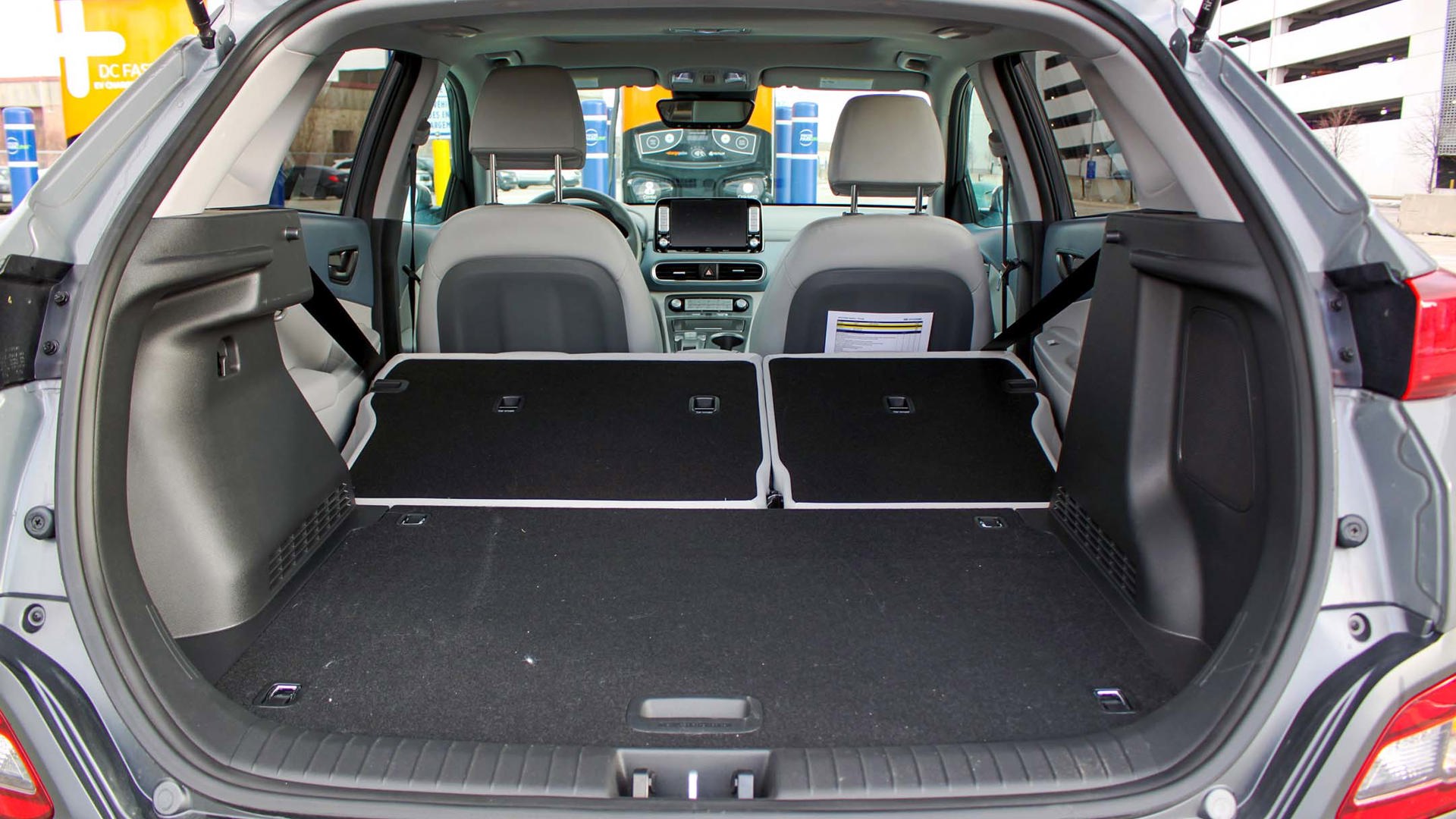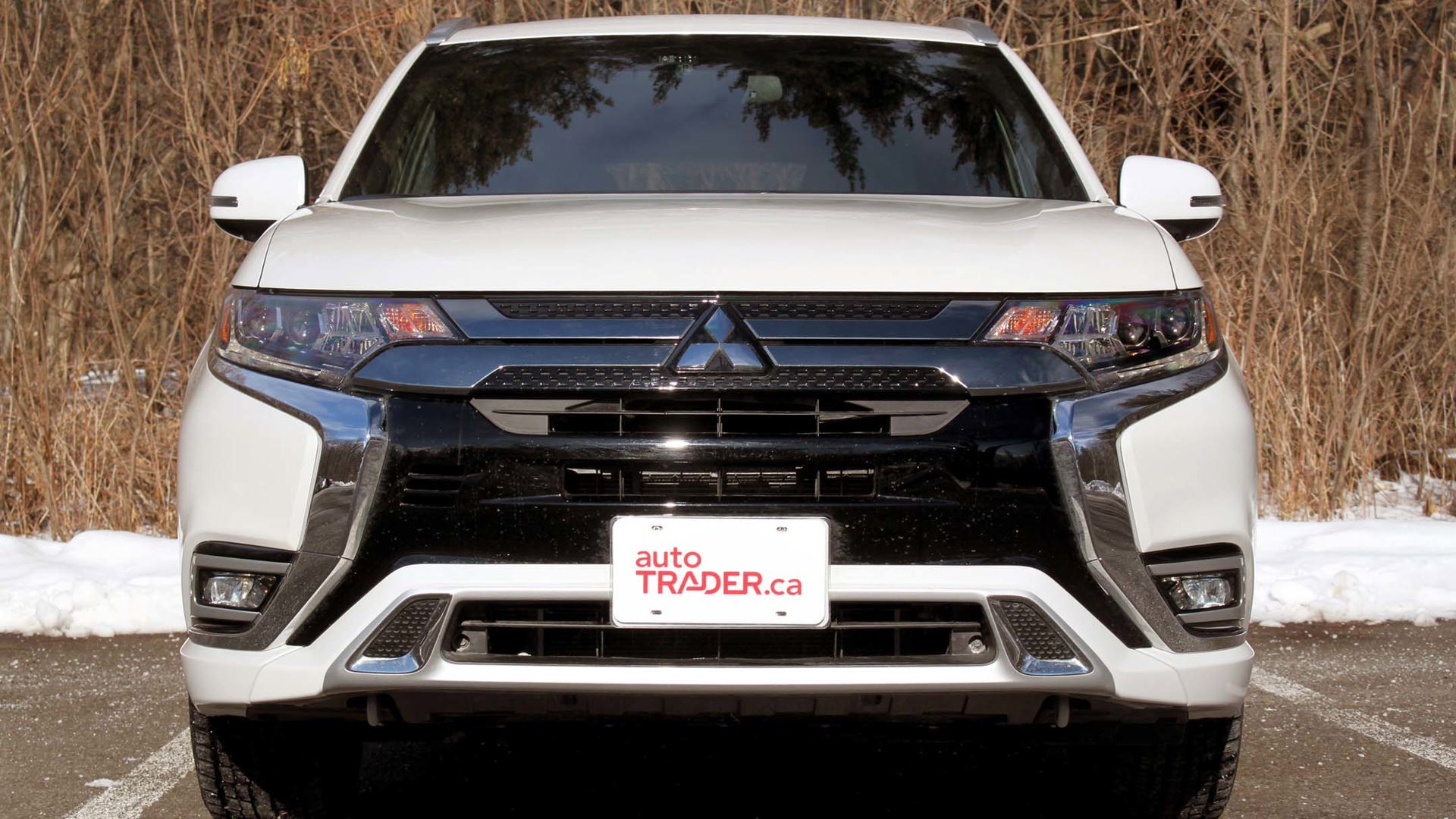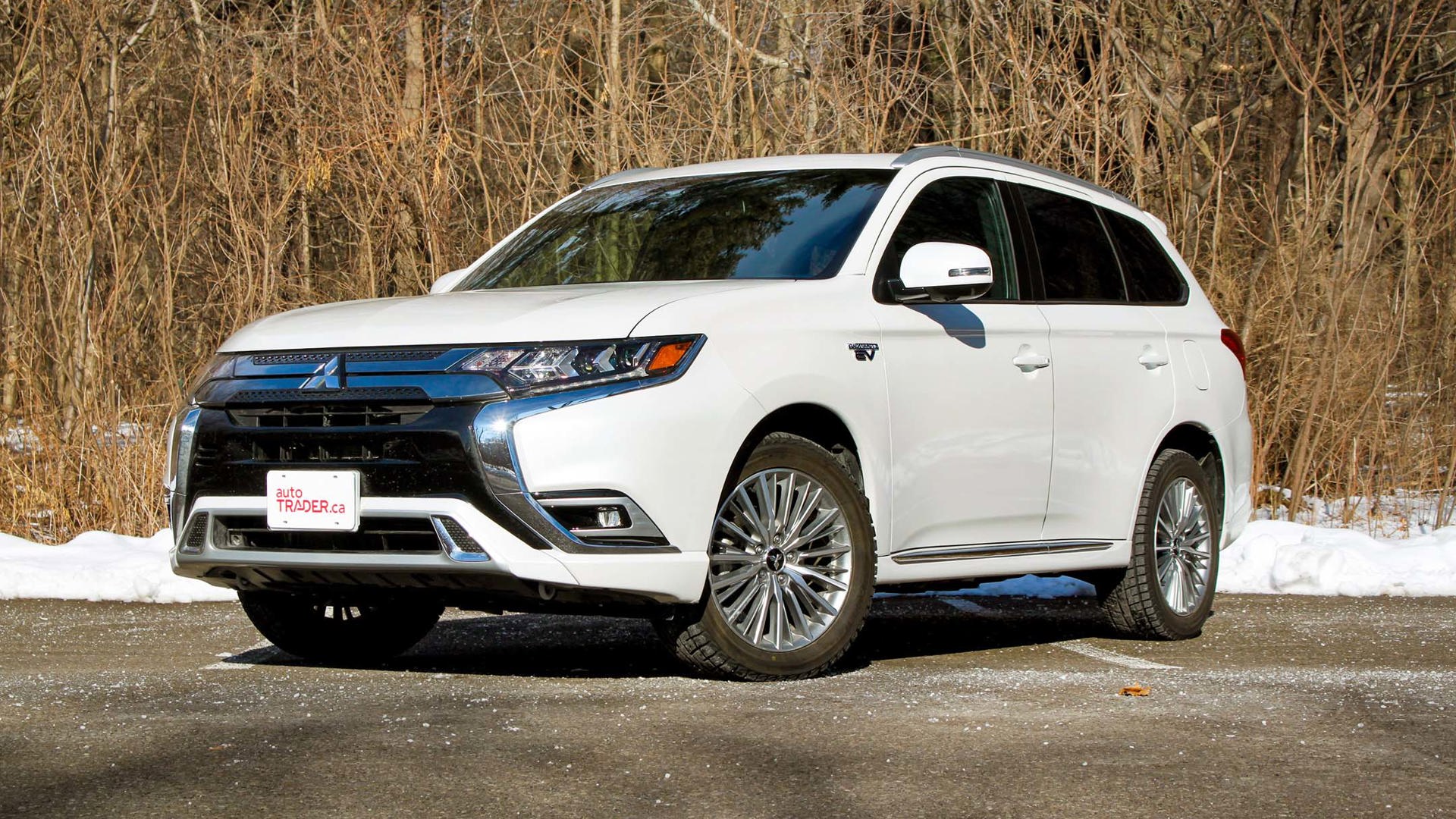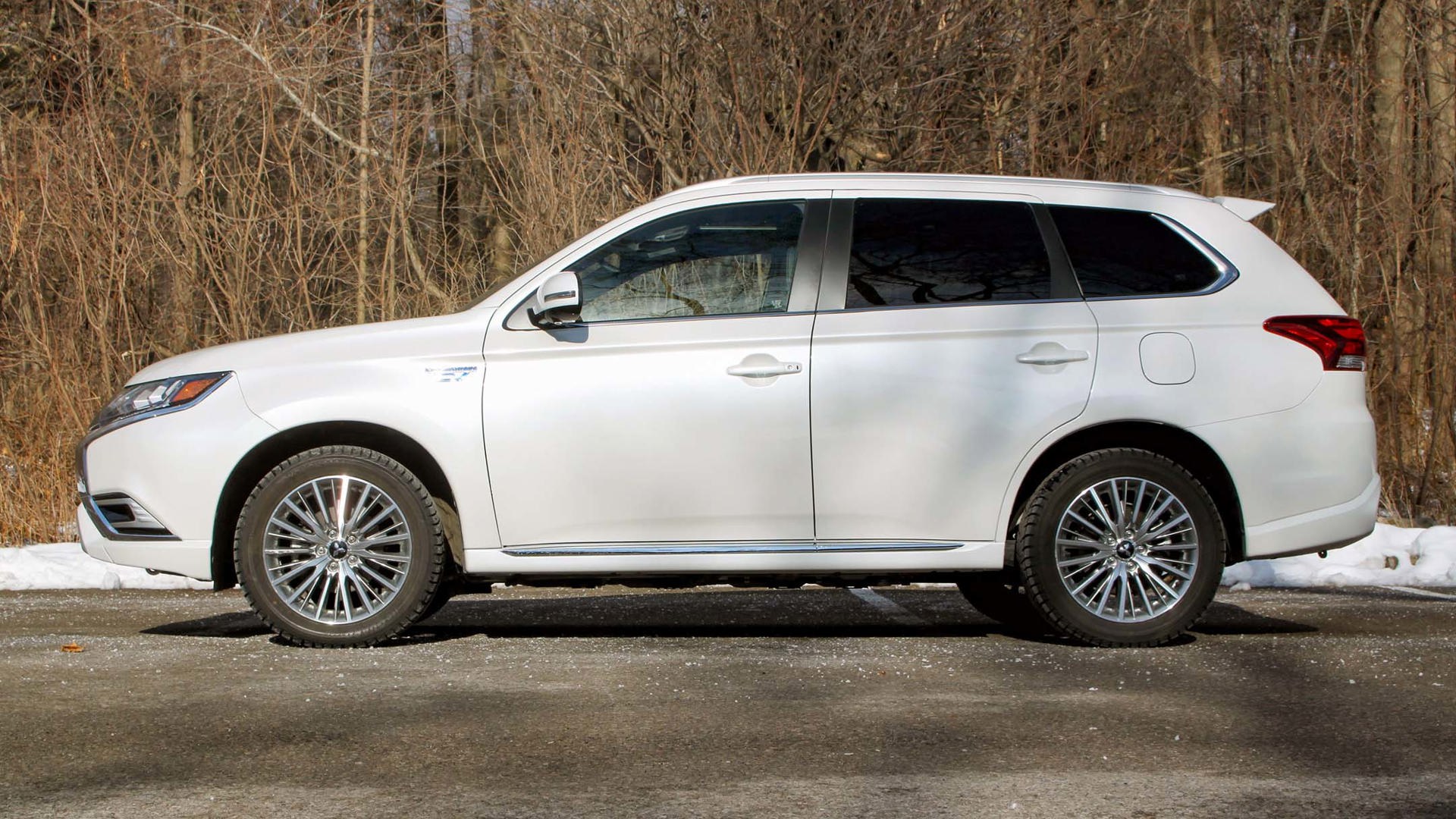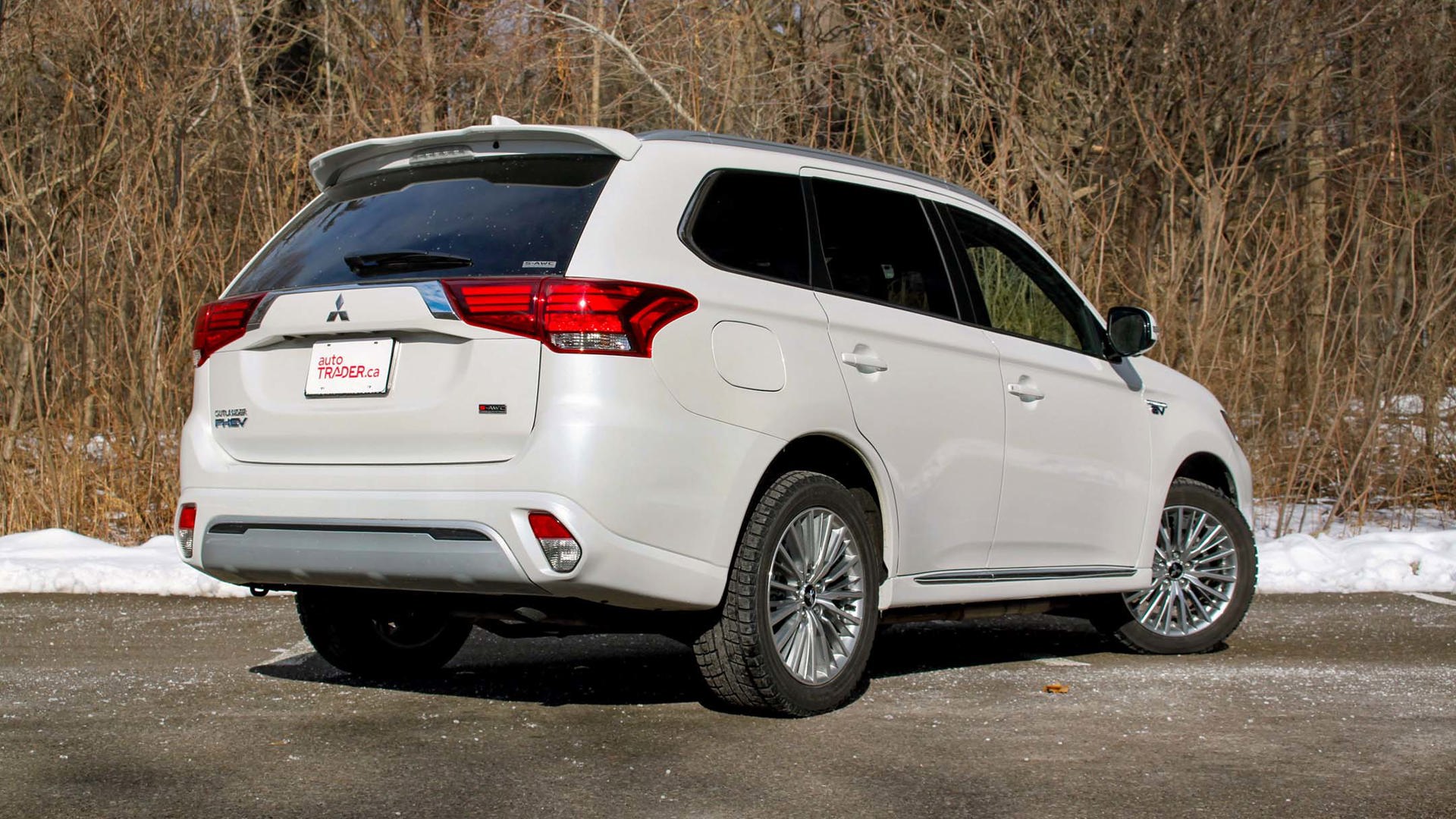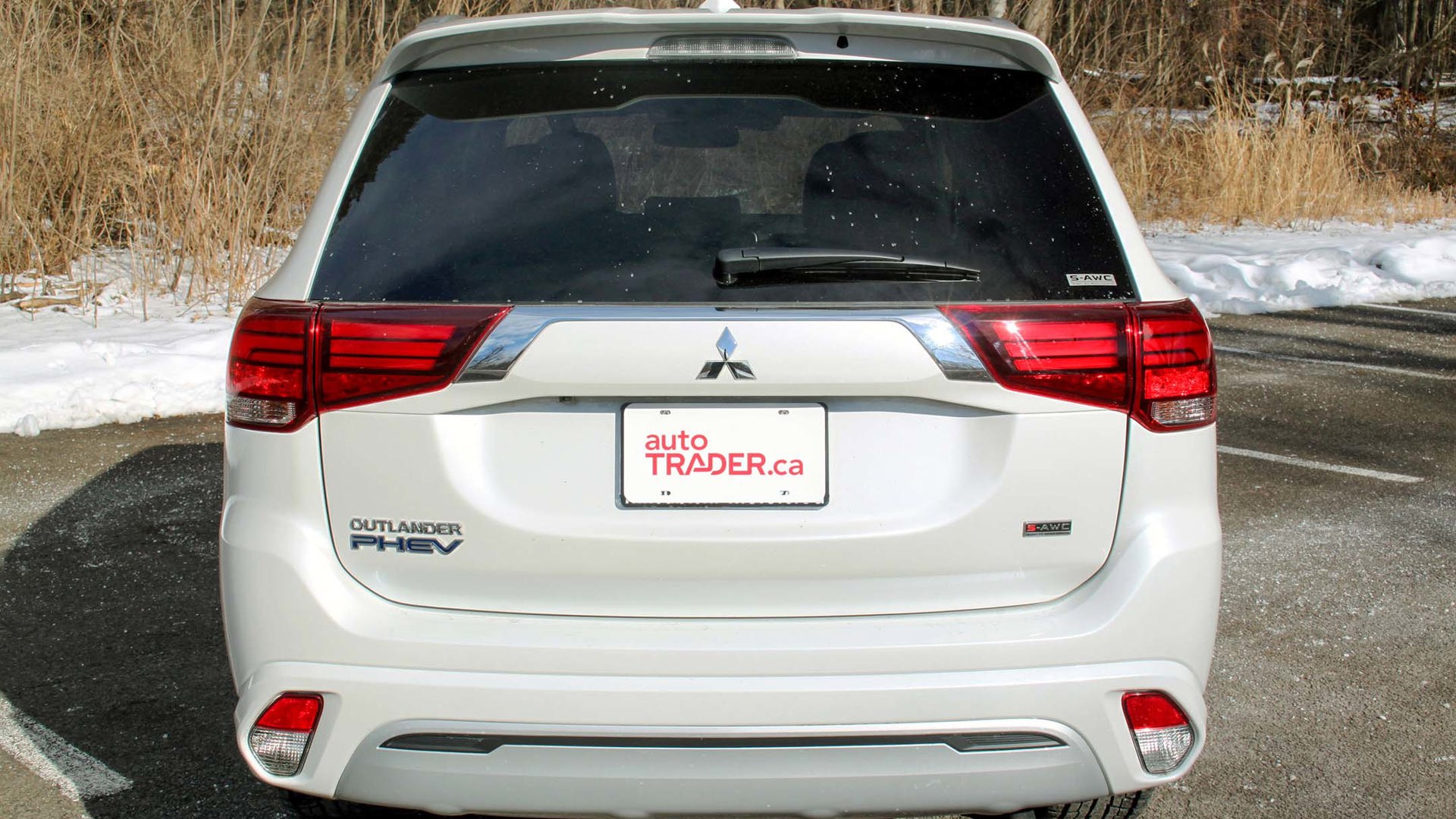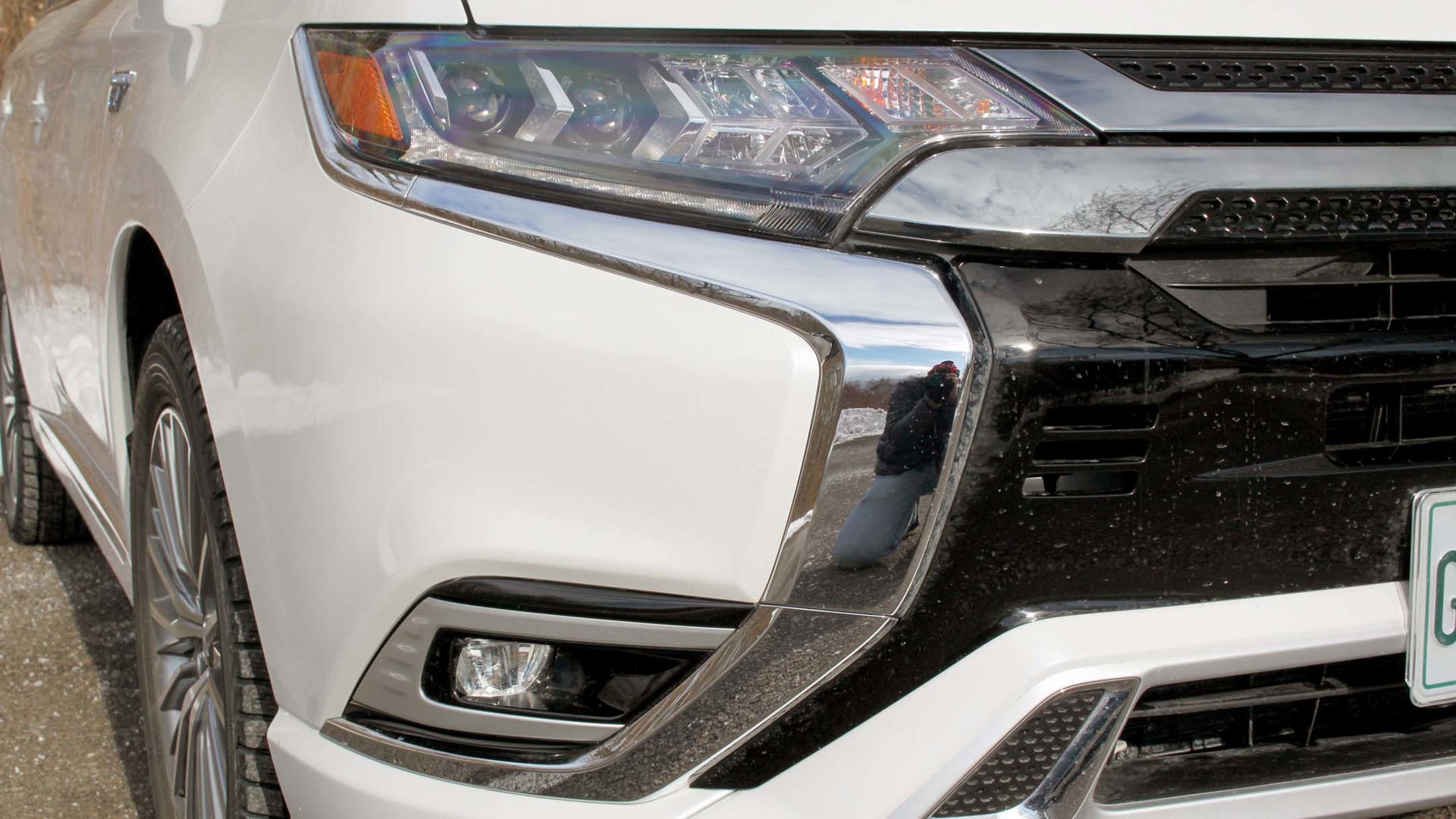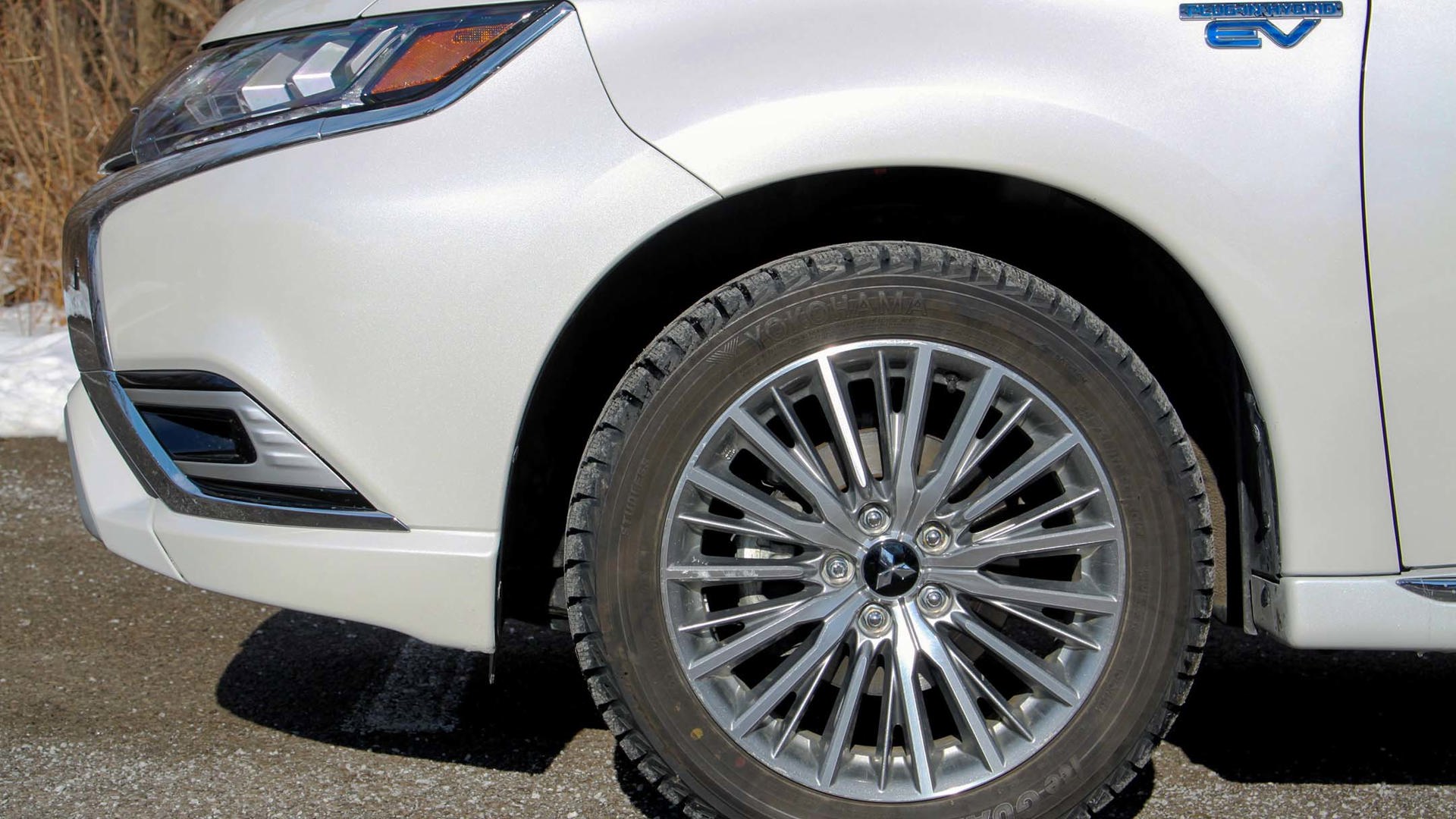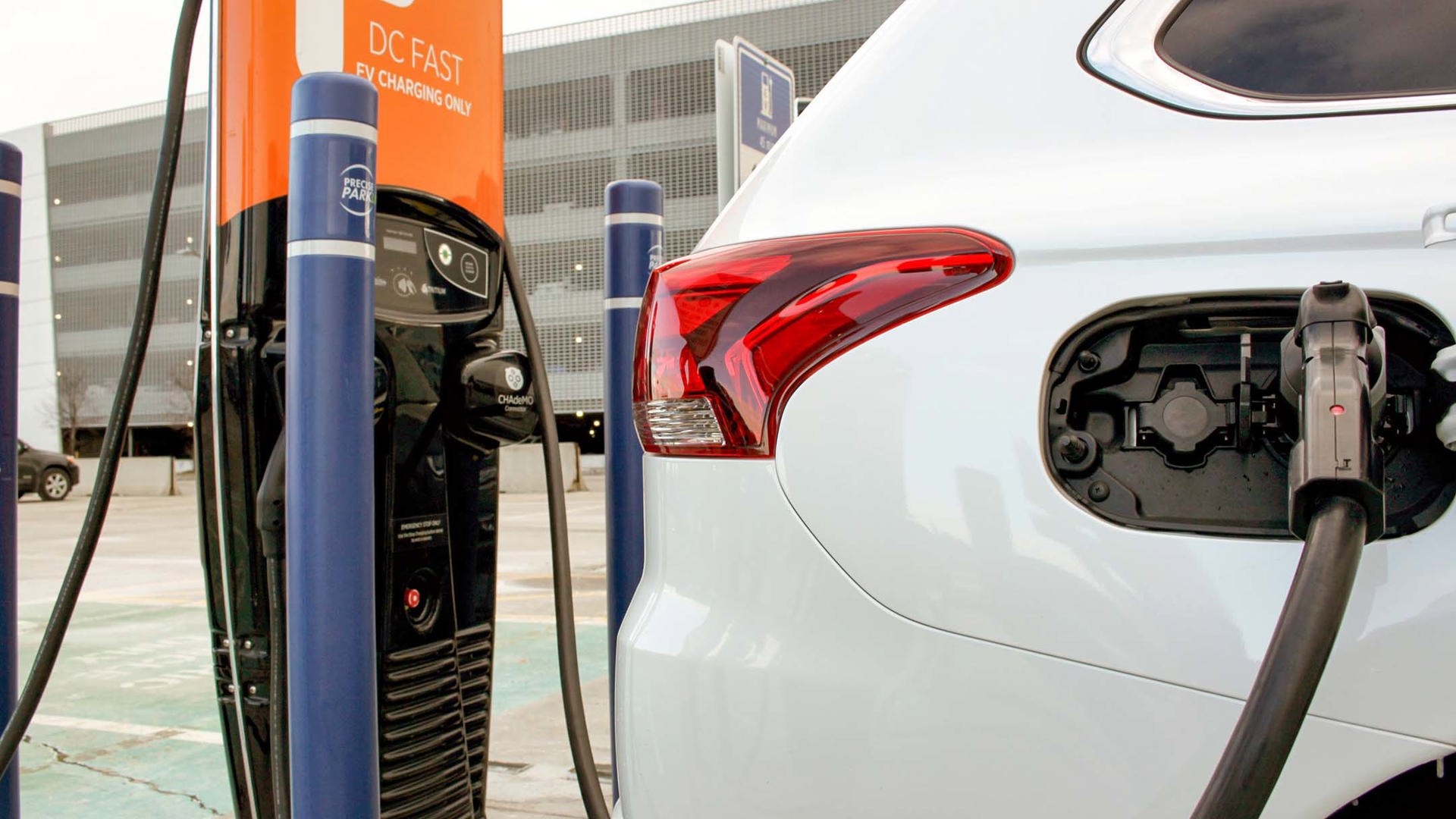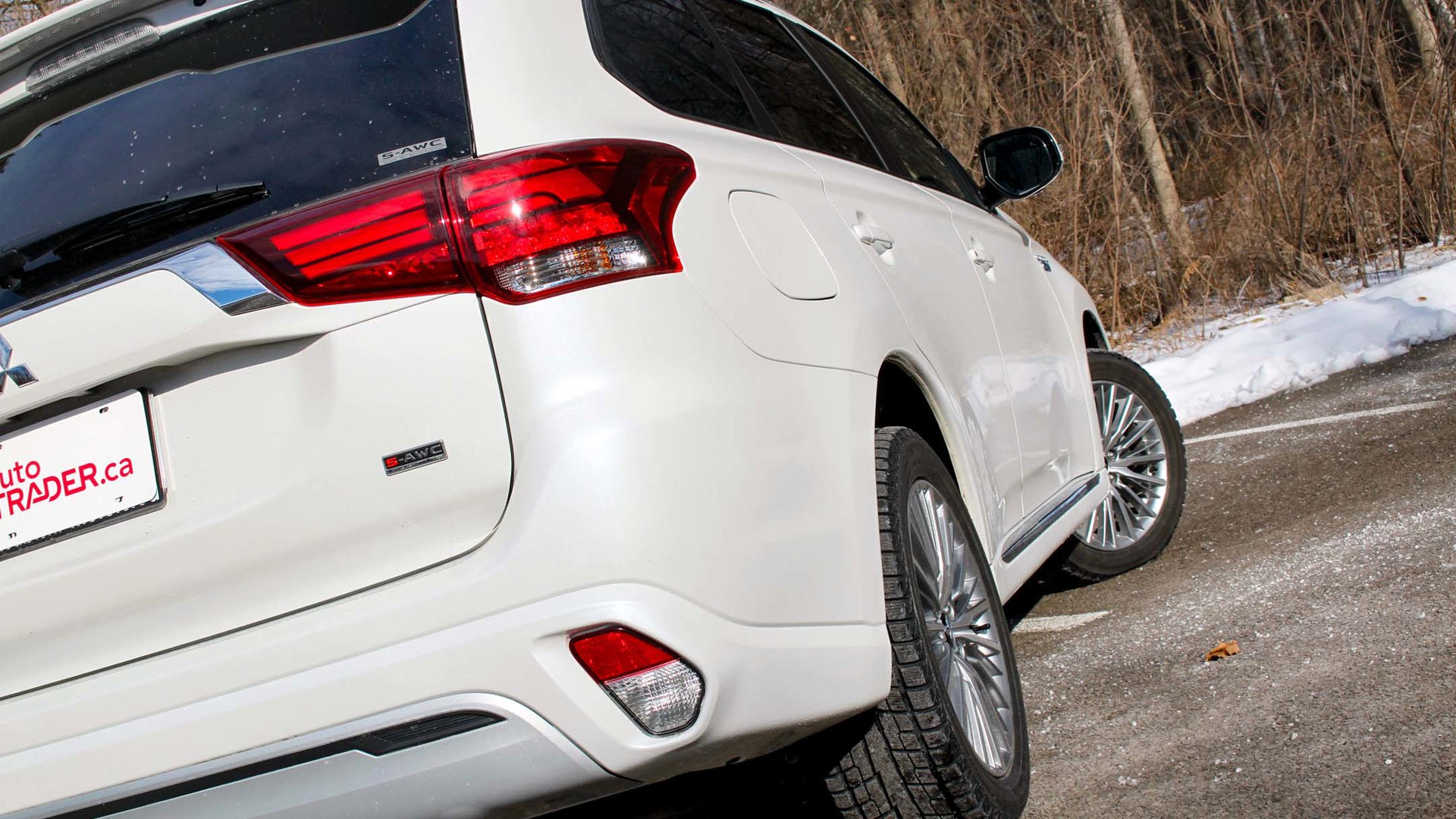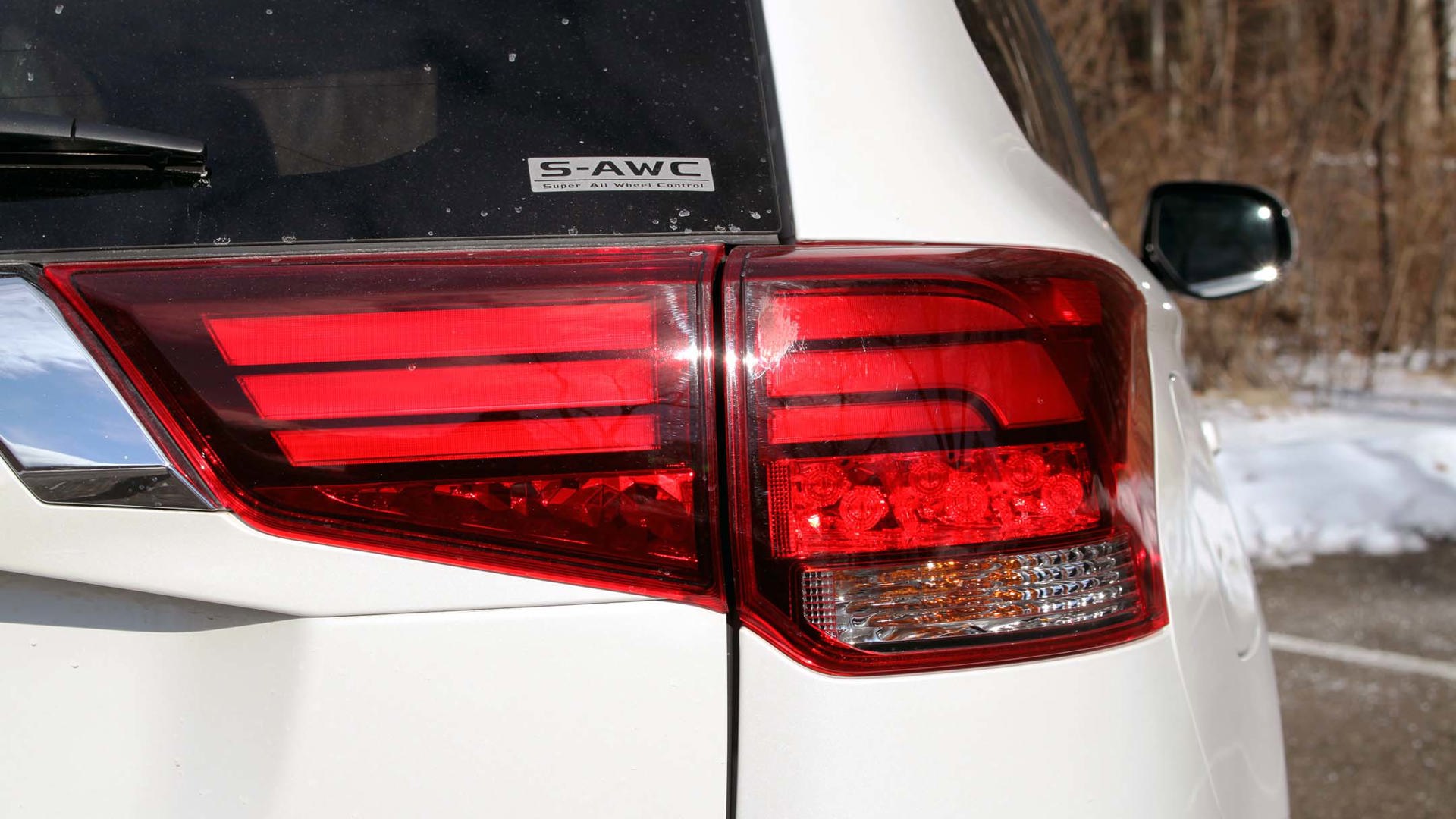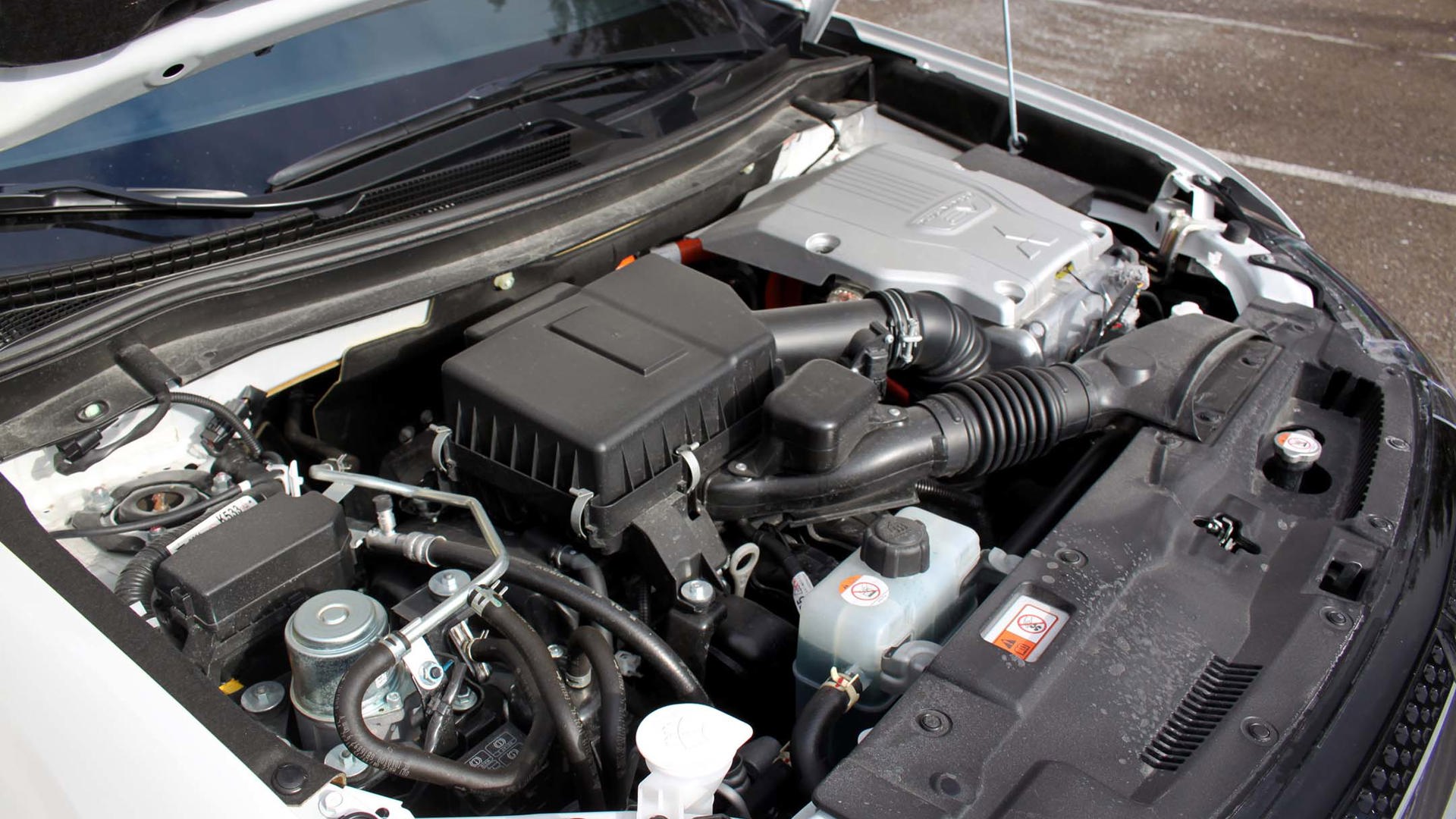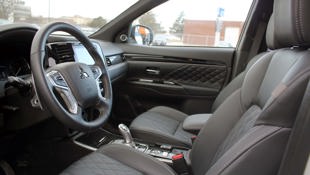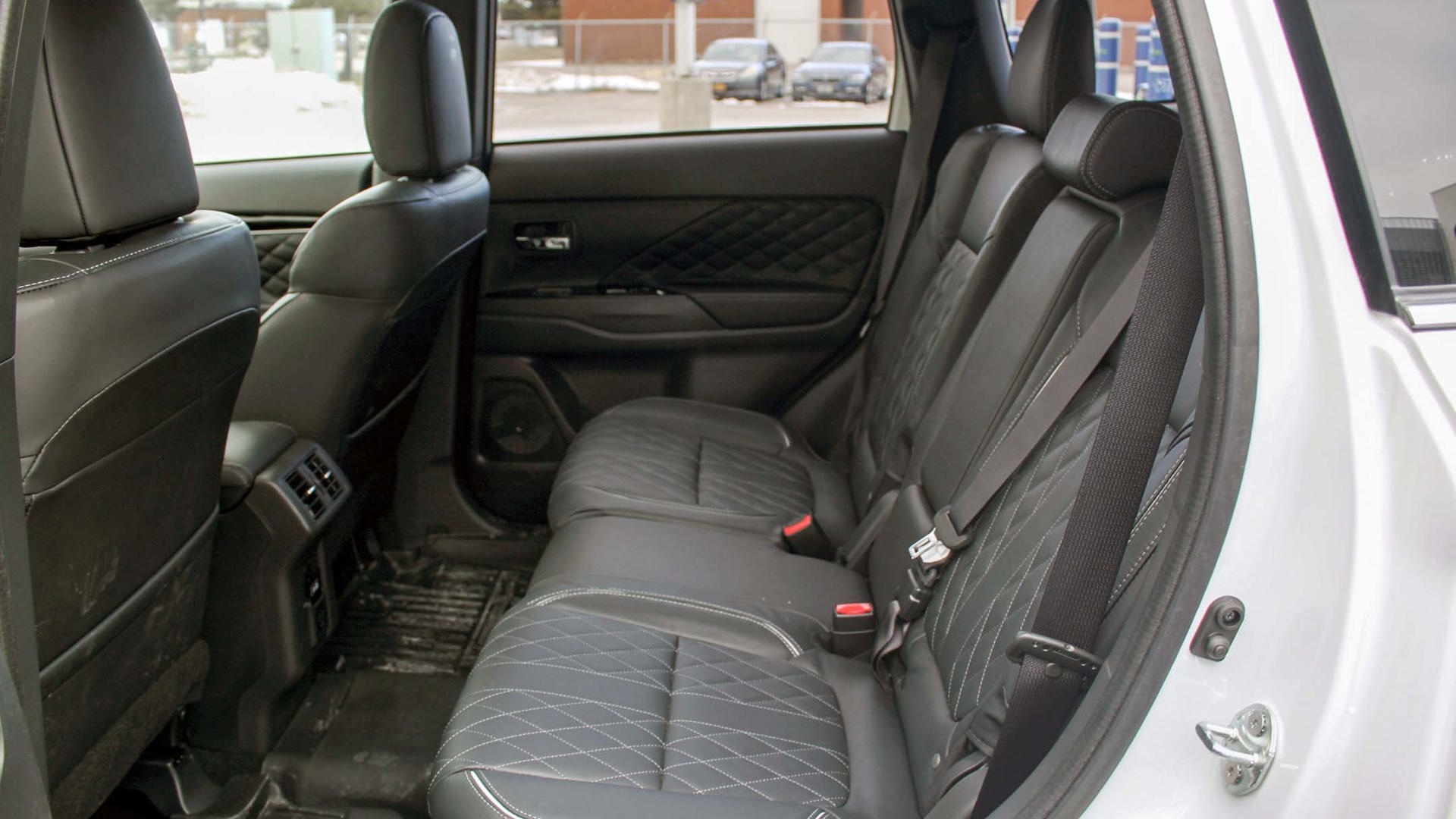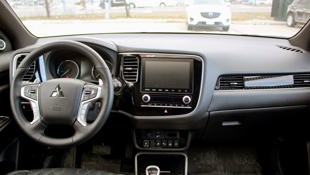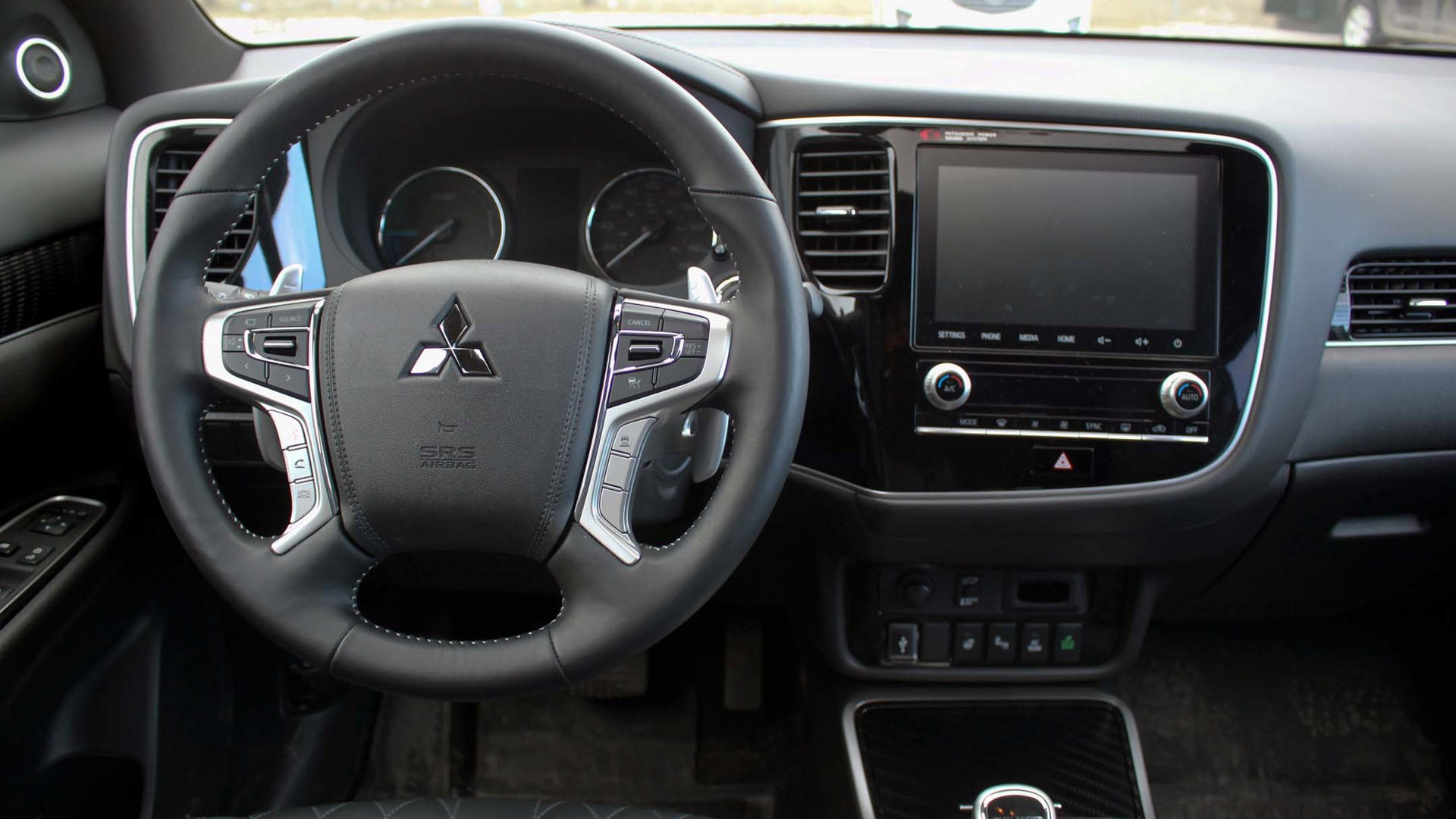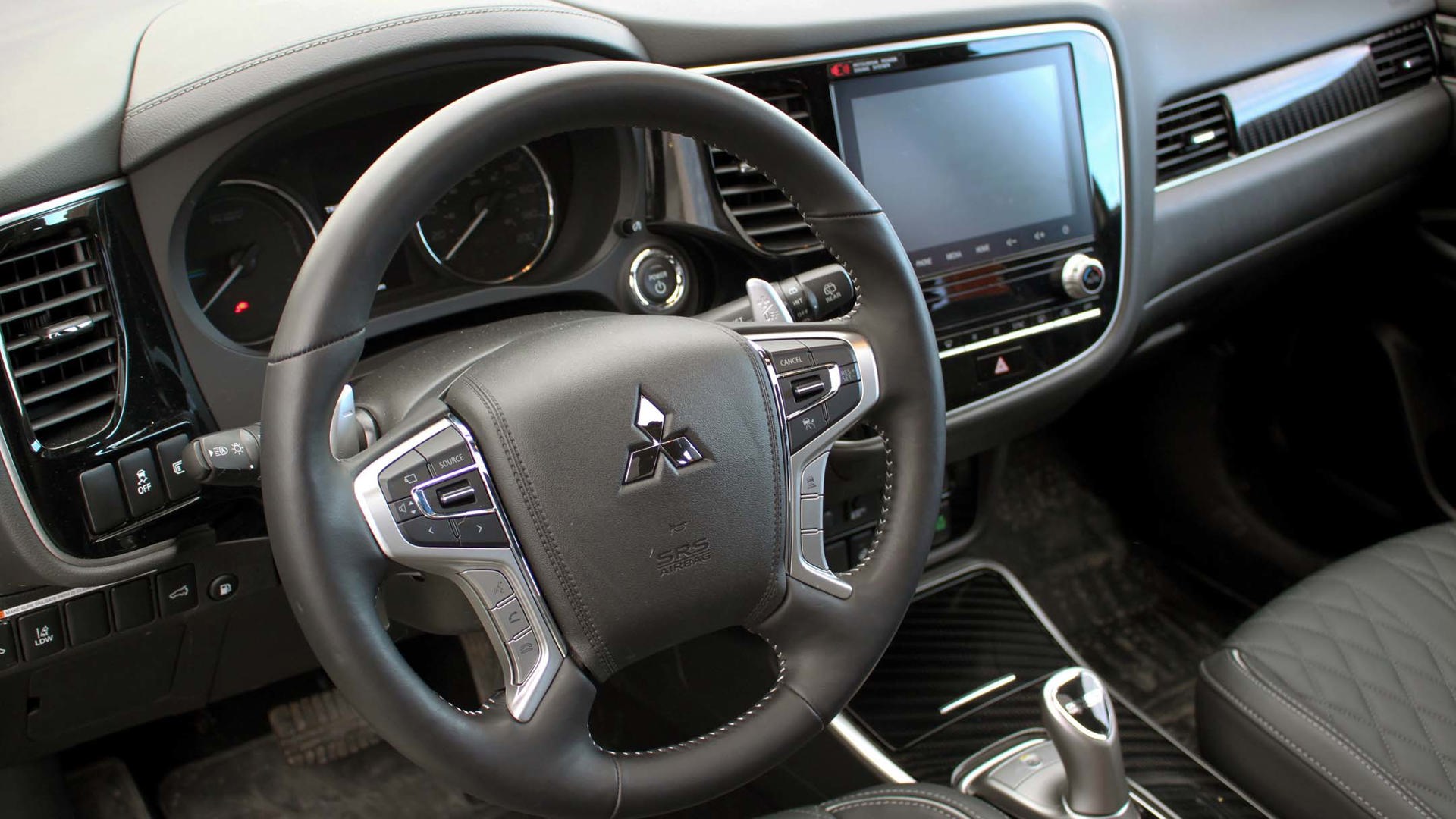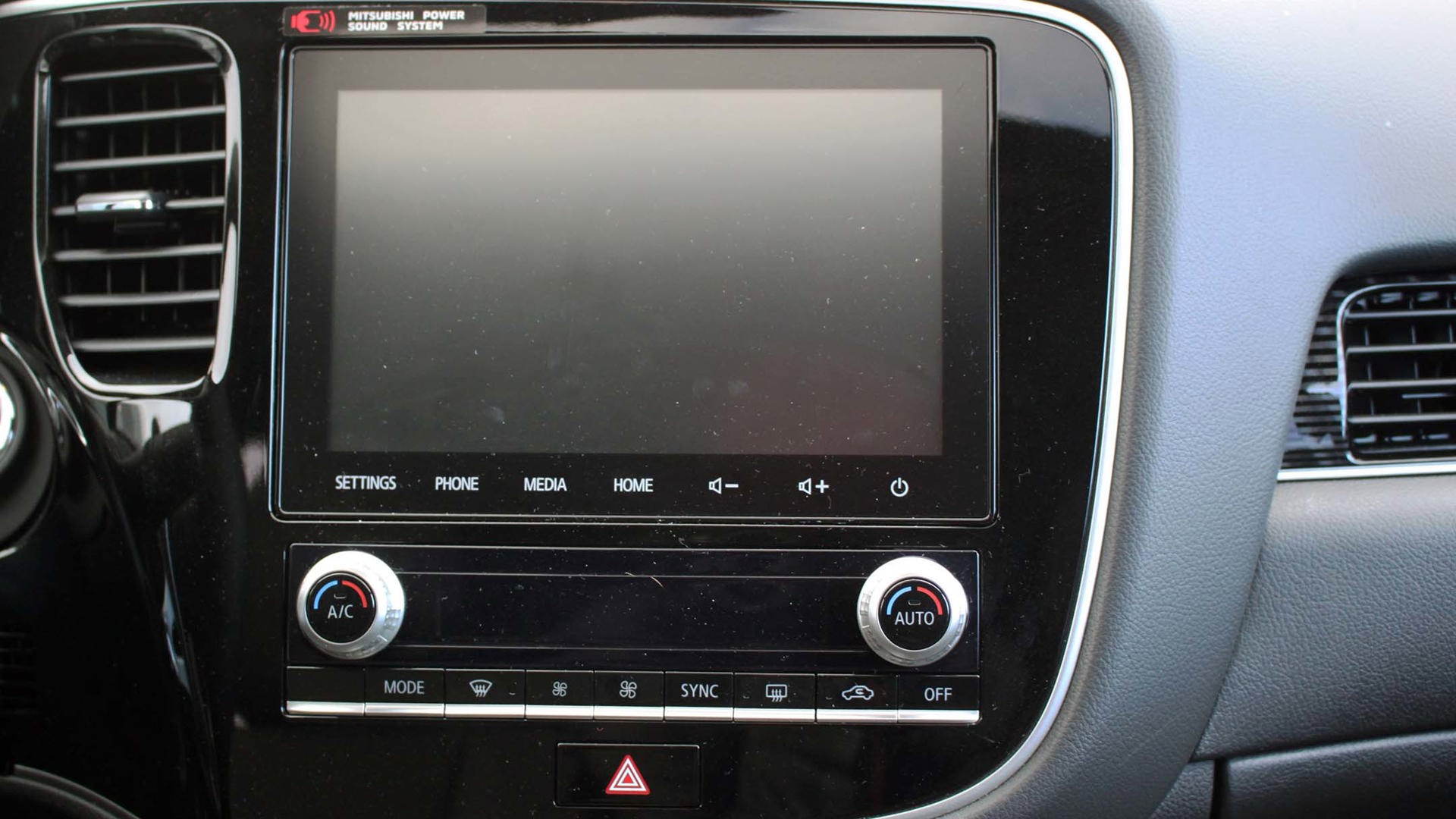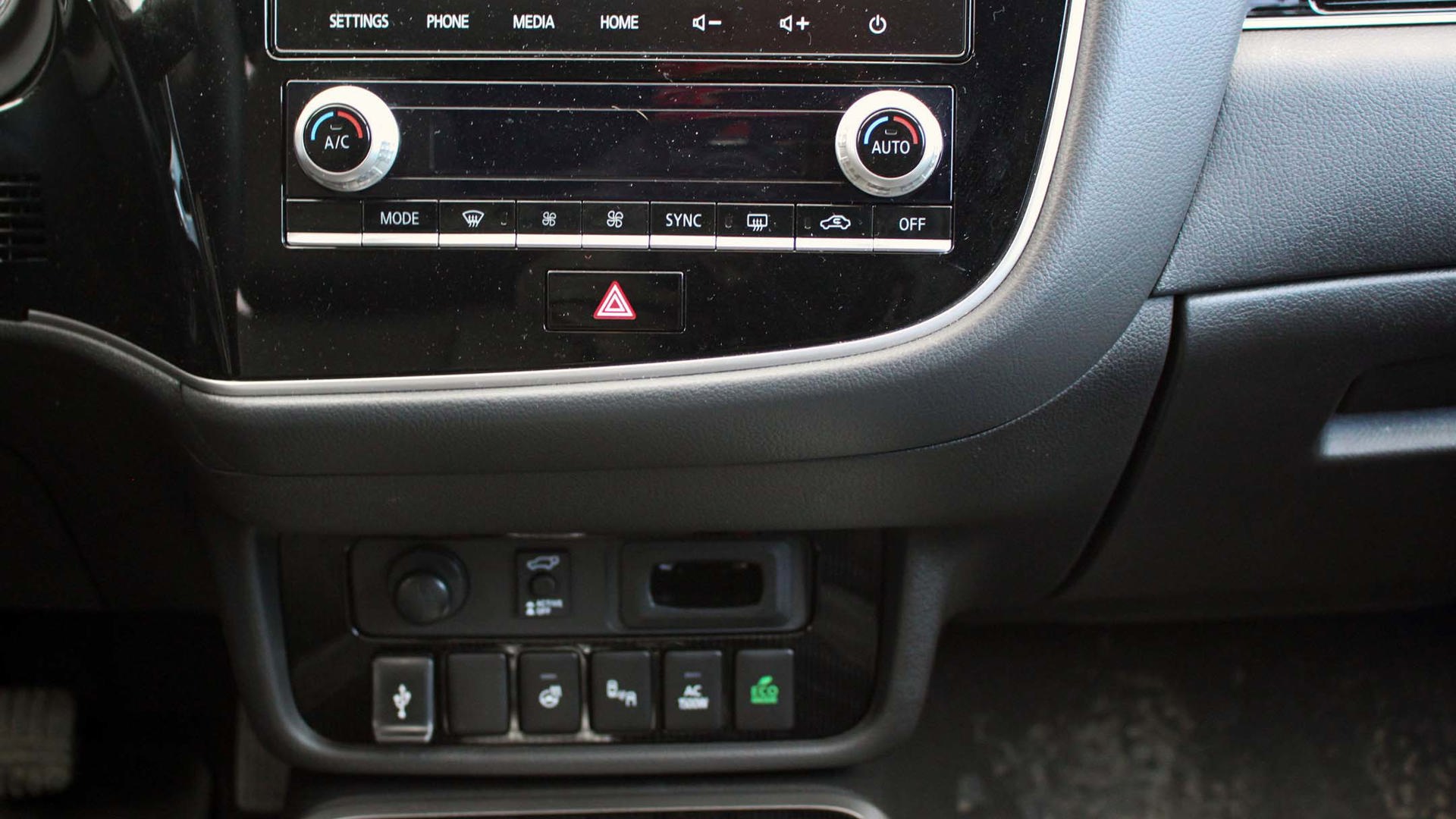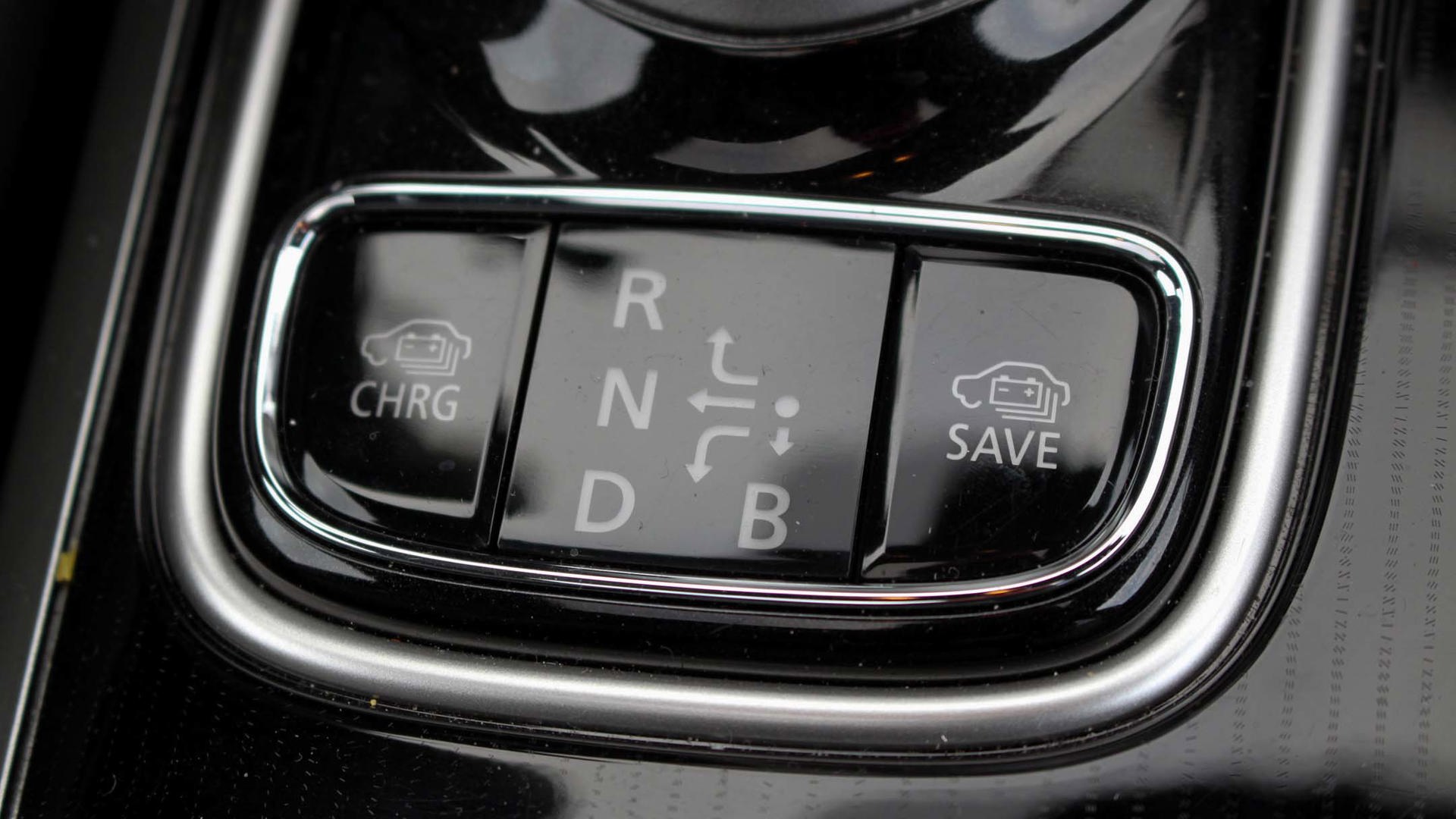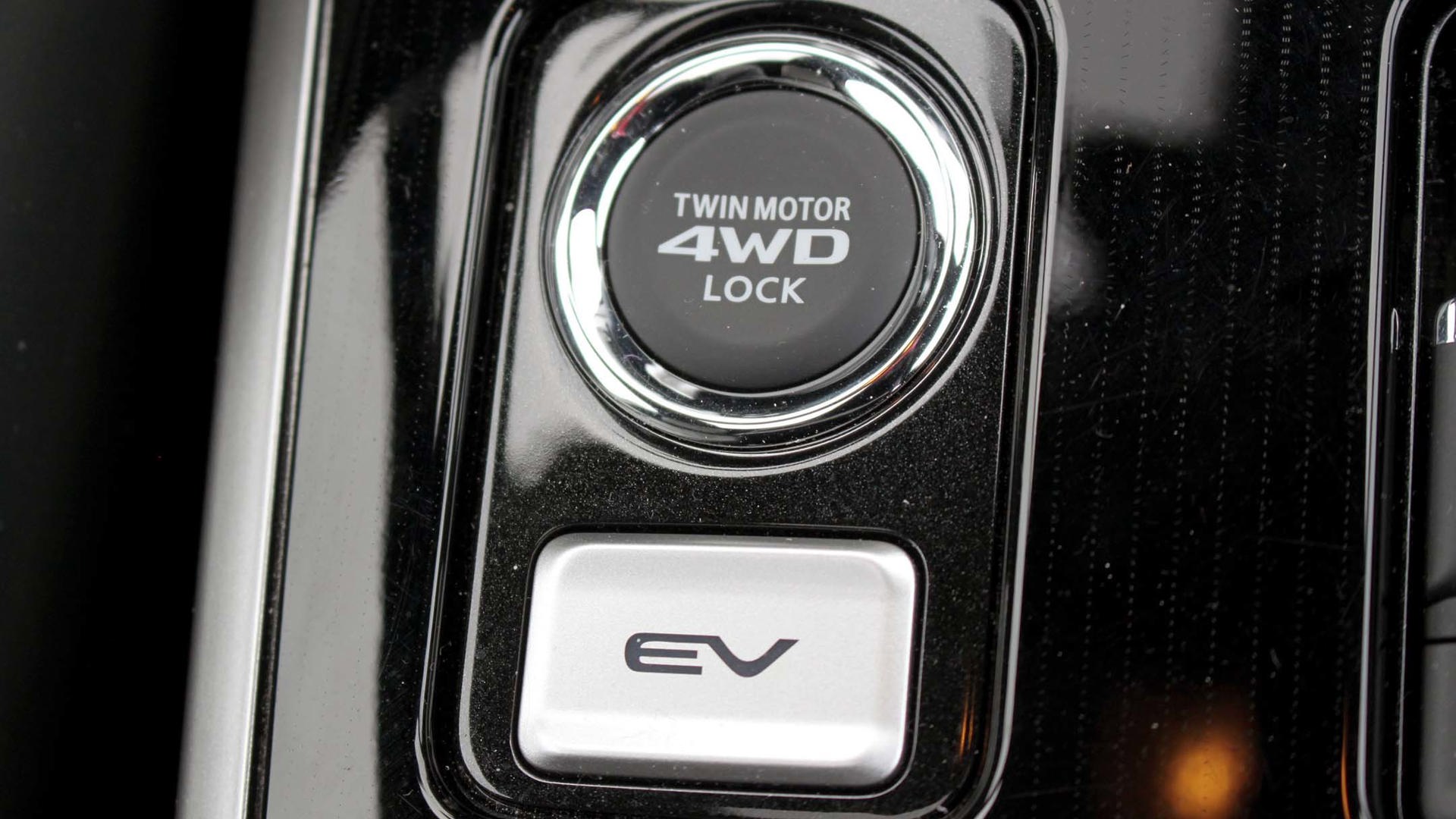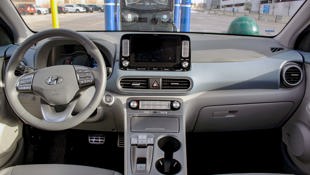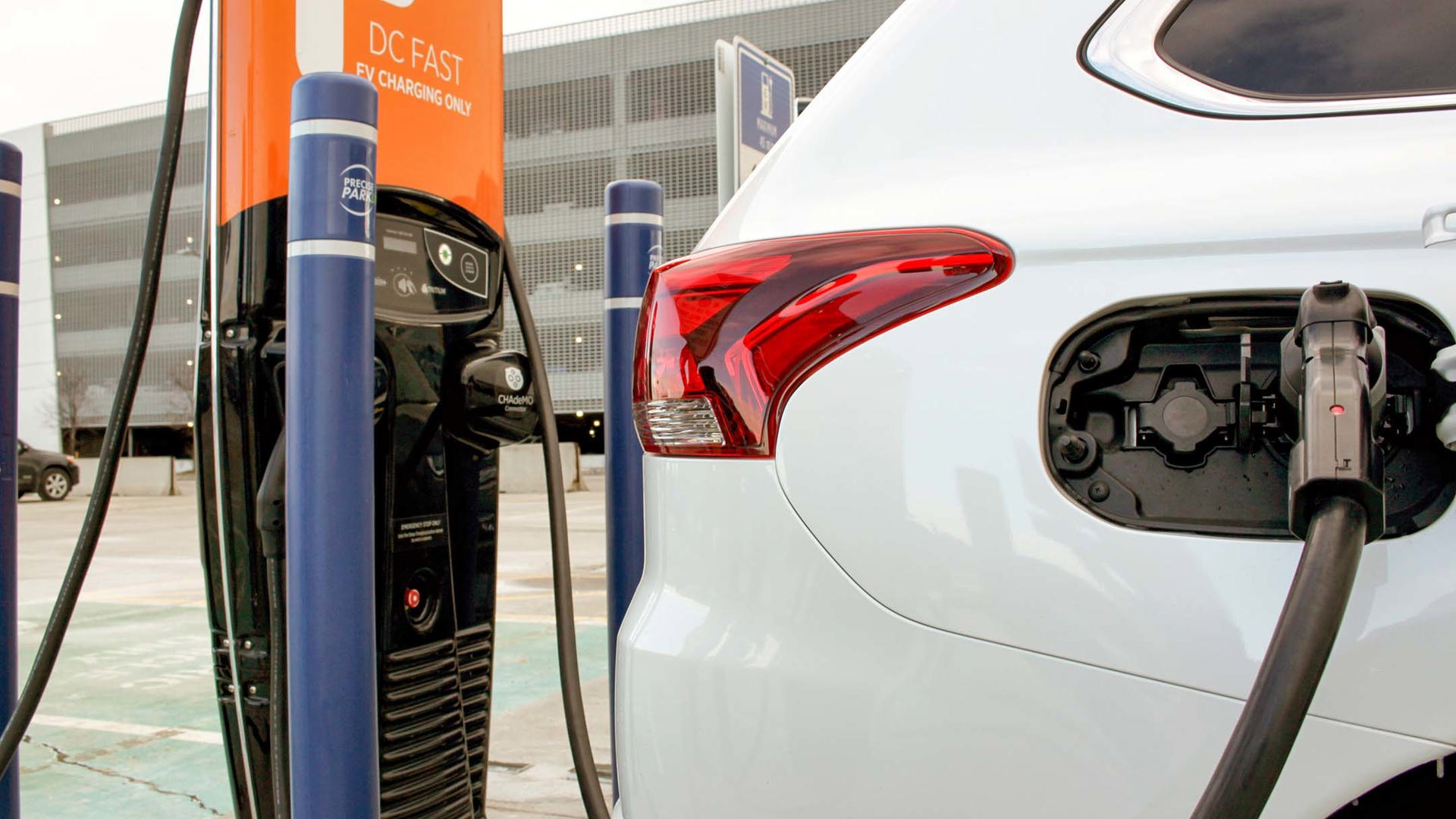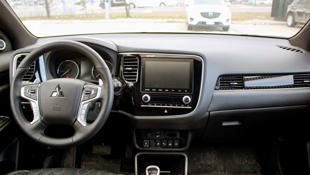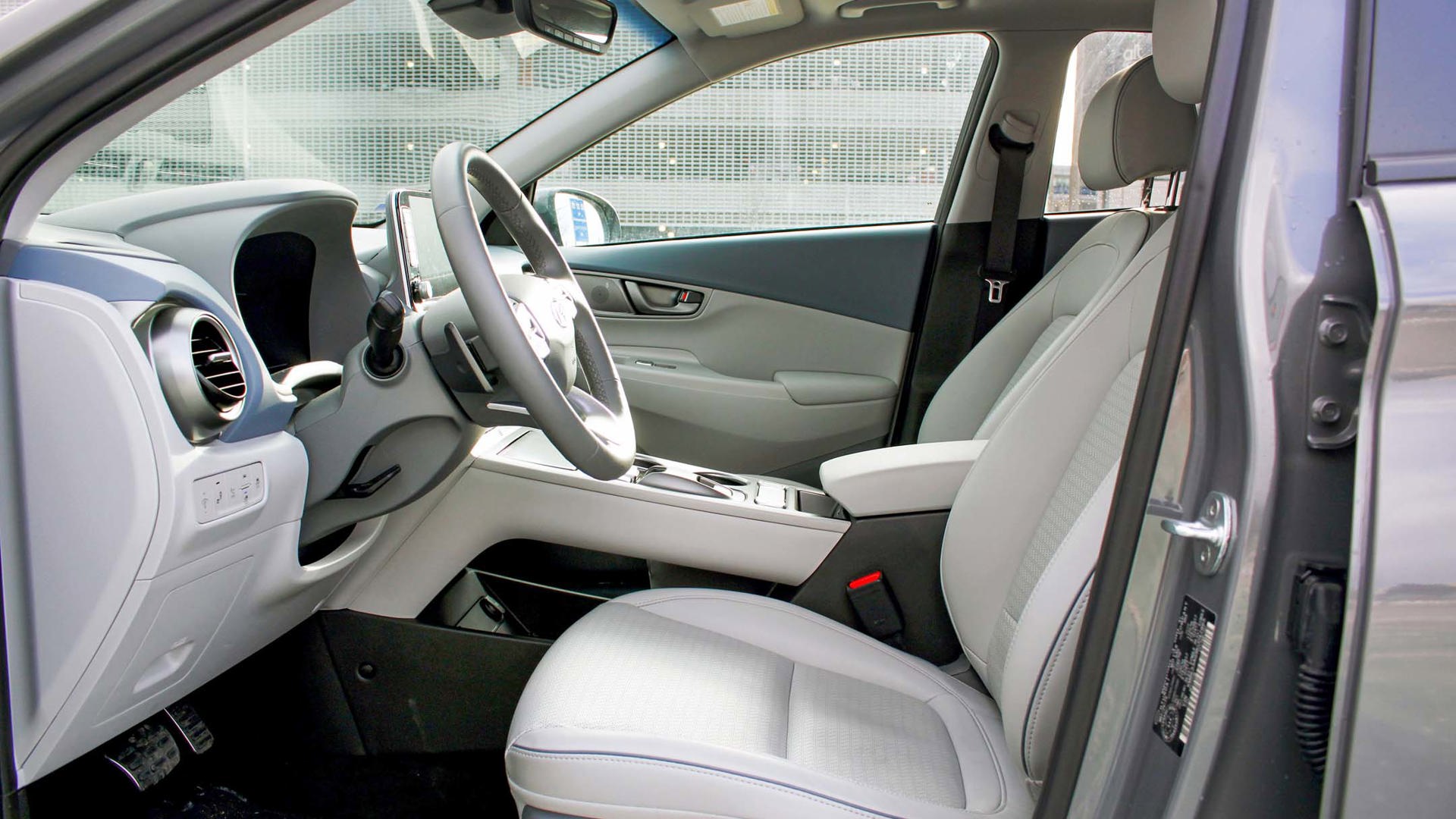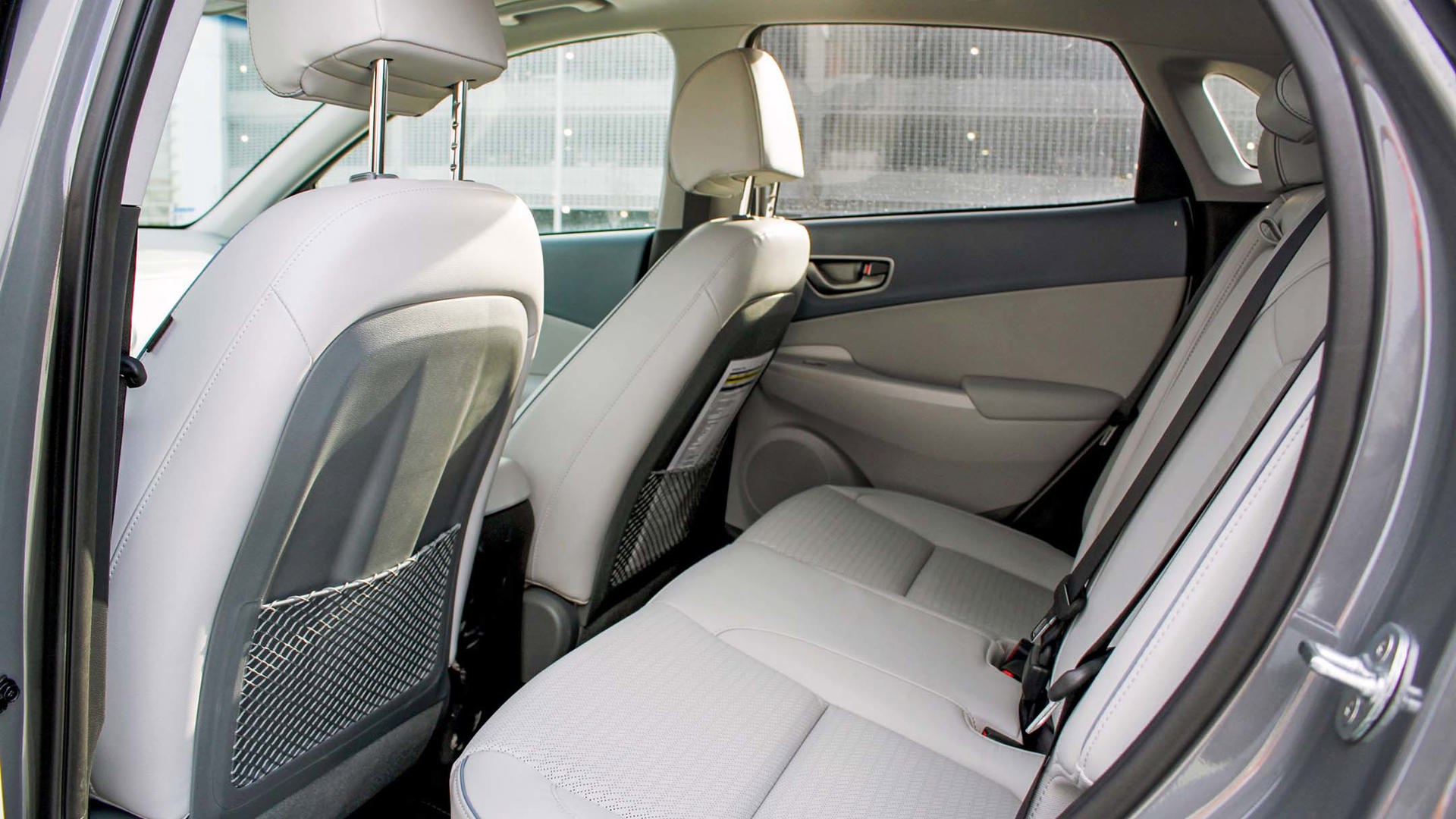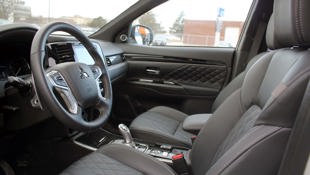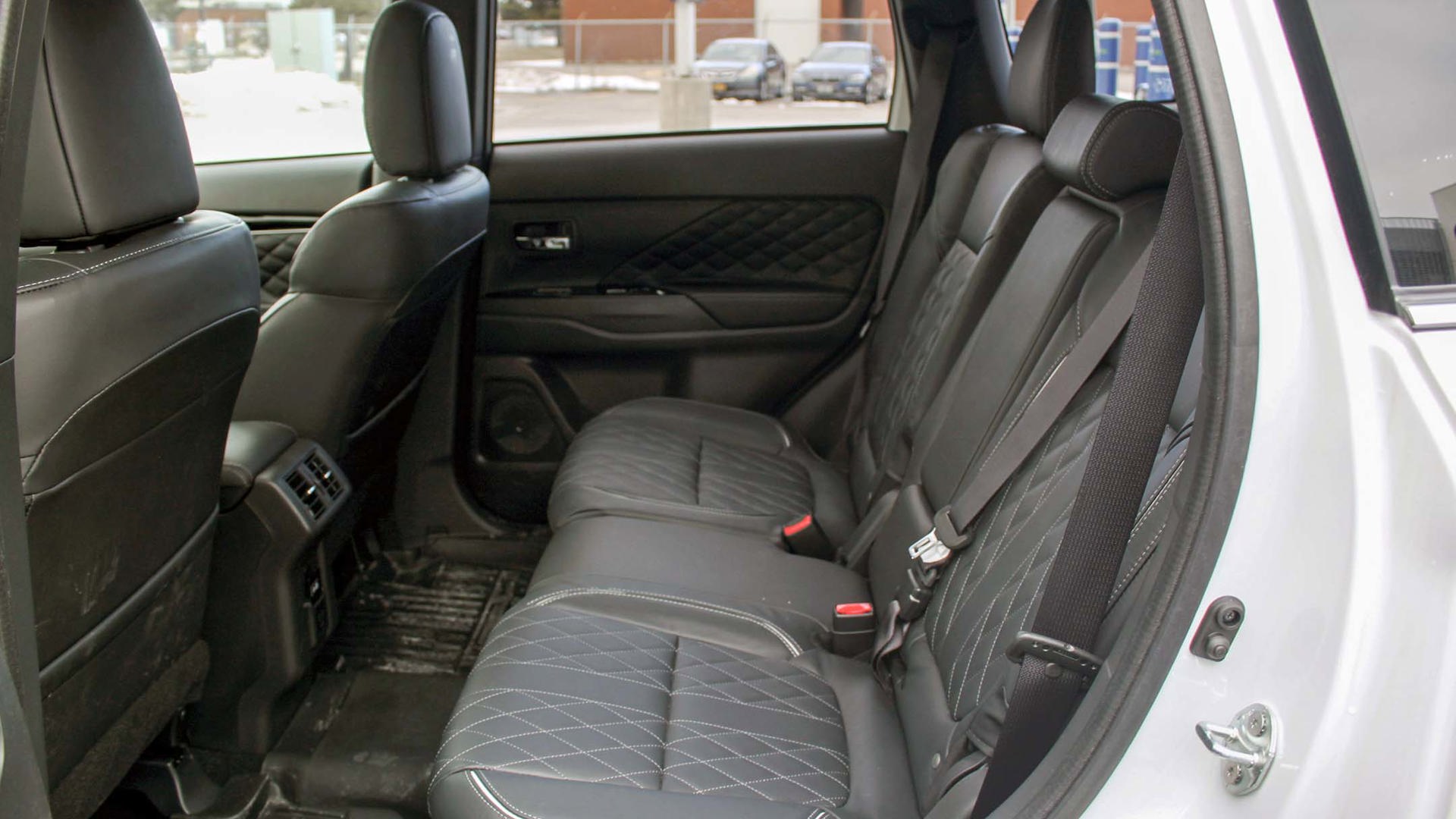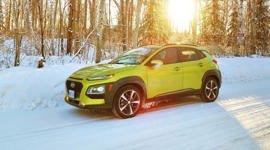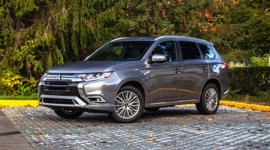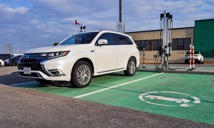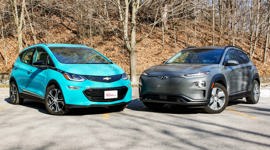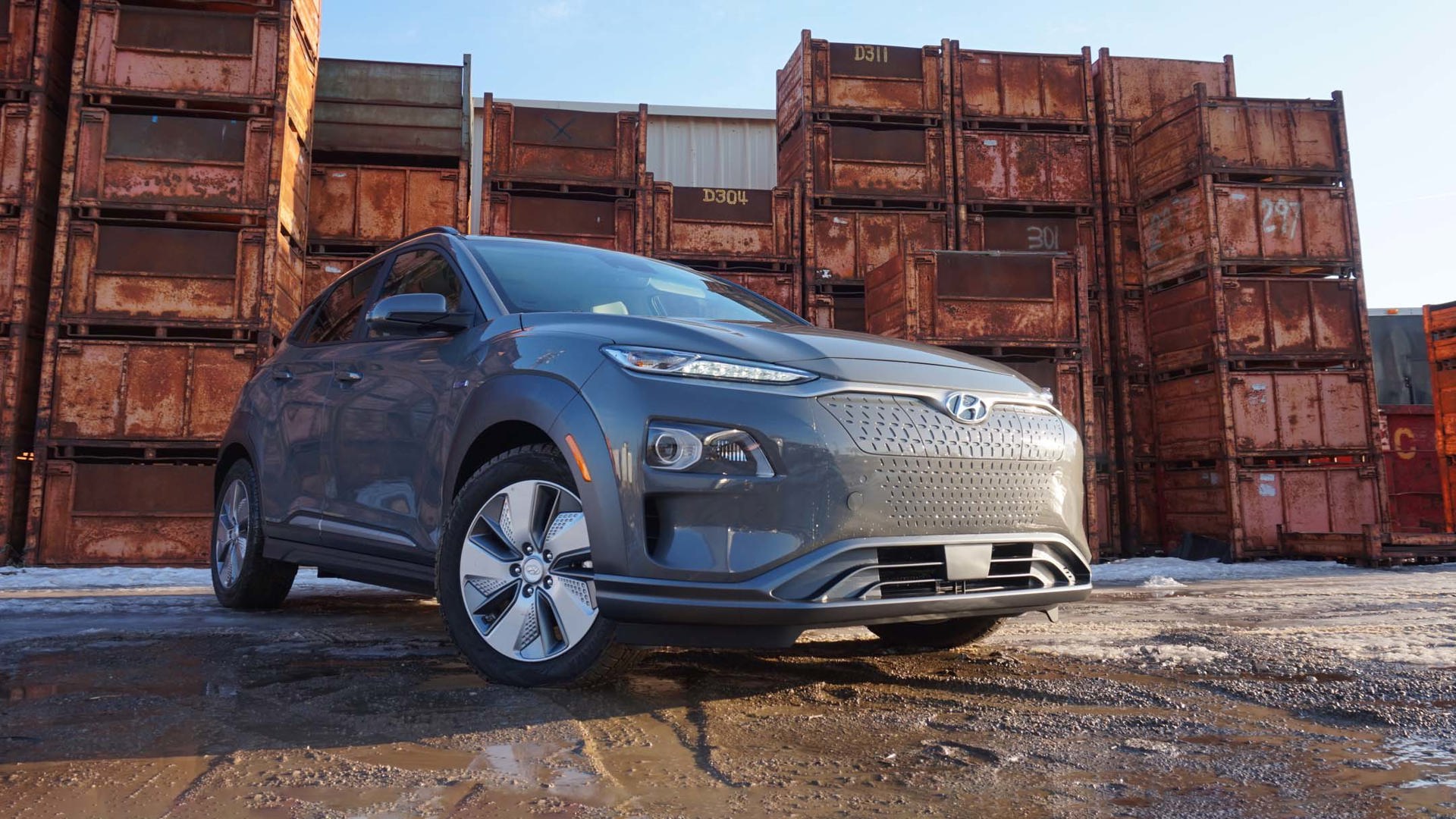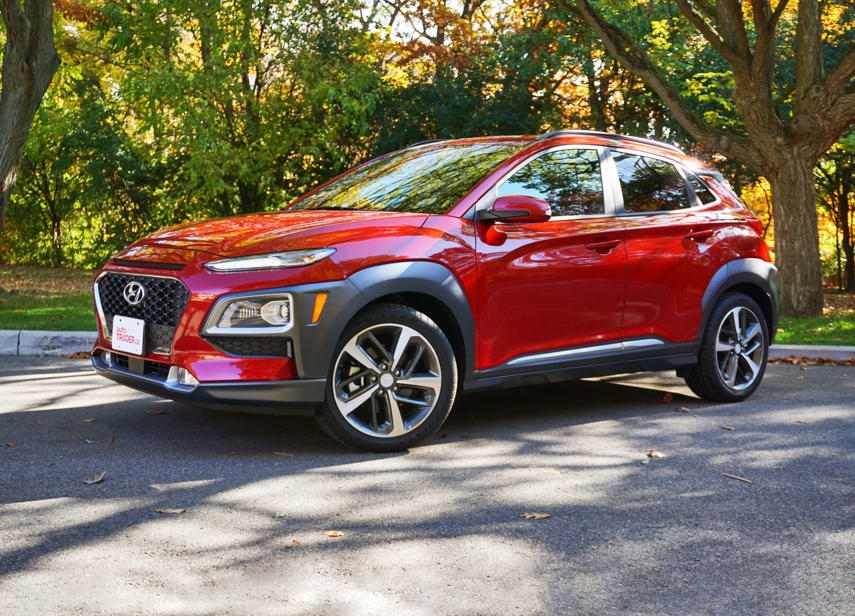Comparison Data
|
2020 Hyundai Kona EV Ultimate
|
2020 Mitsubishi Outlander PHEV GT S-AWC
|
|---|---|
|
Engine Displacement
electric motor
|
2.0L; electric motor
|
|
Engine Cylinders
n/a
|
I4
|
|
Peak Horsepower
201 hp
|
117 hp
|
|
Peak Torque
290 lb-ft
|
250 lb-ft
|
|
Fuel Economy
1.8/2.2/2.0 L/100 km cty/hwy/cmb
|
9.4/9.0/3.2 L/100 km cty/hwy/cmb
|
|
Cargo Space
544 / 1,296 L seats down
|
861 / 1,778 L seats down
|
|
Base Price
$53,049
|
$51,998
|
|
A/C Tax
$100
|
$100
|
|
Destination Fee
$1,810
|
$1,900
|
|
Price as Tested
$55,159
|
$54,298
|
|
Optional Equipment
$200 – Paint, $200
|
$300 – Paint, $300
|
Many shoppers are still skeptical about the realities of electrified motoring.
Even if the range of full electric vehicles (EVs) like the Hyundai Kona Electric surpass 400 km, and even if there are more electric charging stations than ever before, and even if the prices reach more affordable levels; there are still buyers who are worried about the range and charge times. For buyers who are too timid to jump into the world of full EVs, a strong alternative is a plug-in hybrid like the Mitsubishi Outlander PHEV.
These two do everything completely differently from each other. Where one is a full EV, the other is a plug-in hybrid electric vehicle (PHEV) with an electric powertrain that’s augmented by a gas motor. One is a subcompact, while the other is a compact. One features front-wheel drive and the other has all-wheel drive.
However, both are about $50,000 before incentives, and both represent a green approach to motoring. Choosing the best one for you depends on several elements.
Styling
Of the two crossovers, the Outlander looks far more conventional, and not far removed from its traditional gas-powered model. The chrome accents are a bit much and the design is clearly dated, considering the Outlander PHEV originally hit the global market in 2013 and took its time to arrive in Canada. A few design decisions stand out, such as the charging port, which is on the rear passenger side of the vehicle, where other EVs put it closer to the front. This means parking in spots with charging stations has to be planned.
The interior of the Outlander is a mix of good and bad. The main highlight is the stitched leather seating and door trim. The rest of the cabin is full of some cheap-feeling plastics, and ones that rattle and creak as well. The gear selector looks really out of place, like some kind of sci-fi appendage between the seats, and the heated seat controls look absolutely ancient.
The Kona Electric looks far more modern but carries forward that same sort of sci-fi look. While based on the gas-powered Kona, there are a few changes that make a big difference. The grille is nixed for an interesting pattern on the front that manages to conceal the charge port. Even the wheels have a unique design, one catered towards aerodynamics and efficiency. Like the Prius, the Kona looks like a vehicle that is geared towards early adopters and green-conscious car buyers.
The interior is nothing glamorous, but the Kona doesn’t drench the cabin in drab black materials, instead opting for a two-tone design that is a bit more inspiring. Unlike the Outlander, there is no gear stick here; instead, there is a push-button gear selector. The only downside to the cabin is that it never feels particularly high-end, which is unfortunate considering the price tag.
Mitsubishi Outlander Exterior Styling: 7/10
Mitsubishi Outlander Interior Styling: 7/10
Hyundai Kona EV Exterior Styling: 8/10
Hyundai Kona EV Interior Styling 8/10
Safety
Standard safety equipment in the Outlander PHEV is a blind-spot monitor and rear cross-traffic alert system. However, our GT S-AWC trim model featured adaptive cruise control, forward collision mitigation, front and rear parking sensors, and lane-departure mitigation.
An asset for the Outlander is that it has all-wheel drive. There are two electric motors, one for each axle. However, according to the Insurance Institute for Highway Safety (IIHS), the Outlander PHEV hasn’t qualified for a Top Safety Pick rating, with the IIHS having concerns about the headlights in this Mitsubishi. In our experience, there wasn’t anything to worry about, as they were bright and featured high-beam assistance, but the safety organization has concerns about the vehicle’s ability to light up curves.
This version of the Kona doesn’t have all-wheel drive and instead routes power to the front wheels only. Lane-keeping assistance and forward collision avoidance are standard on the Kona Electric. The Ultimate trim model tested featured blind-spot warning, lane-change assist, rear cross-traffic warning, front and rear parking sensors, pedestrian detection, driver attention warning, and a high-beam assist feature. The IIHS hasn’t tested the Kona EV but awarded the conventional gas-powered Kona a Top Safety Pick rating.
Mitsubishi Outlander Safety: 8/10
Hyundai Kona EV Safety: 8.5/10
Practicality
The bigger Outlander is without a doubt a more practical vehicle. It has 861 L of cargo space, and that expands to 1,886 L when you fold the rear seats down. For families with strollers and other kid gear, the Outlander will be the superior green car of these two. It is worthy noting, however, that while the gas-powered Outlander offers a third row, the PHEV doesn’t, a by-product of its rear-mounted battery and electric motor.
But the Kona Electric is no slouch in the cargo department. It features 544 L of storage in its hatch, which expands to 1,296 L when you fold the rear seats down. Passenger space isn’t that far off of the Outlander, with 2,618 L of volume for people, compared to 2,891 L. While the Outlander is more spacious, the Kona doesn’t exactly feel cramped.
Mitsubishi Outlander Practicality: 9/10
Hyundai Kona EV Practicality: 7/10
User Friendliness
The controls and layout of the Outlander may be its worst trait. There’s an awkward placement of the park button, it lacks volume and tuning knobs on the infotainment system, the heated seat controls aren’t in the most ergonomic place, and the buttons for changing drive modes and how the powertrain operates are in different locations. The Outlander’s saving grace is that it features Android Auto and Apple CarPlay.
The Kona, on the other hand, is far more traditional and straightforward. There is one button for the drive modes, and the gear buttons are all next to each other. The HVAC settings are easy to understand, and there are helpful knobs on the infotainment system. The Hyundai also features Apple CarPlay and Android Auto support, and even has a wireless phone charger as well.
Mitsubishi Outlander User Friendliness: 6/10
Hyundai Kona EV User Friendliness: 8/10
Features
As the safety and driver’s assistance list shows, these two cars are pretty well equipped. Convenience features in the Outlander include heated seats and a heated steering wheel as well as dual-zone climate control. The Mitsubishi also includes a sunroof and power liftgate.
The Kona has heated seats, and a heated steering wheel as well as a sunroof, but also features a set of vented seats up front. There is no dual-zone climate control, but the Kona also features a head-up display.
Mitsubishi Outlander Features: 8
Hyundai Kona EV Features: 8
Power
The Outlander features a slightly more complex powertrain, by combining its gas components with an electrified setup. There’s a 2.0L four-cylinder gas engine that makes 117 hp and 138 lb-ft of torque. This works in combination with a pair of electric motors (one at each axle) which makes 80 hp each. The motor for the front axle makes 101 lb-ft of torque and the one in the rear puts out 144 lb-ft. Due to the different peaks of power, it’s hard to say exactly what the total output of the Outlander is. The Outlander uses a single-speed gearbox, but it never feels particularly quick. The electric motors are nice and responsive, and I love the ability to quickly switch between EV or hybrid modes, or use the gas engine to charge the batteries as needed – or even save the battery for whenever you deem it ready. By using the column-mounted paddle shifters, you can adjust the amount of regenerative braking between six settings. Finally, you can use the S-AWC button by the gear stick to engage the all-wheel drive system. The Outlander’s powertrain is perhaps its most impressive trait, with plenty of versatility.
However, the Kona, with its all-electric powertrain, feels far more responsive and powerful. Its motor puts out 201 hp and 290 lb-ft of torque. It has two eco-minded drive modes – the more conservative setting limits the speed to 90 km/h – as well as a sport mode. The paddle shifters on the steering wheel adjust between three levels of regenerative braking. While the powertrain in the Kona isn’t as versatile and customizable as the Outlander, it feels far simpler and easier to use. There are fewer features to fiddle with.
Mitsubishi Outlander Power: 8/10
Hyundai Kona EV Power: 9/10
Fuel Economy
The Outlander is rated to return 35 km of all-electric driving on a single full charge of its battery. Of course, drivers can also stretch that EV range by charging the battery with the gas motor or operate the vehicle in a hybrid mode. Charging time ranges from 13 hours to 3.5 hours depending on the voltage and type of outlet, while a quick charger will bring the battery to 80 per cent (about 28 km) from zero in just 25 minutes. Natural Resources Canada (NRCan) says the vehicle returns the equivalent of 3.2 L/100 km, although when driven in the hybrid mode, it manages 9.4 L/100 km in the city, 9.0 on the highway, and 9.2 combined.
Curiously, Mitsubishi has outfitted the Outlander with a pretty small gas tank, leading it to a range of about 498 km total. To be blunt, that is plenty. According to a 2016 Statistics Canada report, the average Canadian’s commute to work is 8.7 km. That seems a bit low, but even then, the data suggests that commuters could go to work and back twice on a single battery charge. It’s not bad, but if you had to refill a car every two days, you’d probably feel like that’s a bit of an inconvenience. Fortunately, Outlander PHEV owners can fill their tank with gas, and probably manage a whole week’s worth of commuting and more before refuelling. It just means the Outlander feels a bit compromised, never really excelling at one thing.
The Kona, with its estimated range of 415 km, feels more impressive, providing far more electric range without needing to recharge. If you were using a simple 120-volt outlet to charge the vehicle from empty, it’d take two and a half days, which is insane to think about. To think about it a bit more rationally, that’s about 6.9 km of range per hour. Using a Level 2 charger, this process speeds up considerably, with nine hours and 35 minutes to a full charge. Depending on the Level 3 charger, getting to 80 per cent (332 km) takes between 75 and 54 minutes.
Since the Kona Electric is a full EV and the Outlander is a PHEV, it makes more sense to give the efficiency and economy nod to the Hyundai. The Outlander’s key advantage is that it is quicker and easier to refuel and recharge, but the total range isn’t that much more than the Kona.
Mitsubishi Outlander Fuel Economy: 7/10
Hyundai Kona EV Fuel Economy: 10/10
Comfort
The extra space and plush leather seats in the Outlander make it considerably more comfortable than the Kona. The ride quality is also a bit softer than the Hyundai. However, the gas motor means there is more noise, and the vehicle beeps quite harshly about insignificant warnings such as the “ice possible” notification. And when it comes to noise, there’s a distinct difference in the reverse sounds of the two vehicles. The Kona has an angelic hum, while the Outlander has more of a metallic screech. The Hyundai is far more pleasant to the ear.
Mitsubishi Outlander Comfort: 7.5/10
Hyundai Kona EV Comfort: 7/10
Driving Feel
The Kona is also more enjoyable to drive, feeling far from an appliance. The heavy steering helps it feel a bit more precise, there is less body roll, and the smaller proportions of the vehicle make it seem more agile. Add these traits to the peppy feel of the electric motor and the Kona is the more exciting vehicle to drive around.
The Outlander feels like a large lumbering appliance. It never feels like it’s in any hurry, and the extra weight and body roll leaves it feeling far less inclined to be driven with haste. It is worth pointing out that while driving and parking the Outlander, I felt a little less inclined to seek out spots with chargers than I did in the Kona since it can always be refuelled at a gas station.
Mitsubishi Outlander Driving Feel: 6/10
Hyundai Kona EV Driving Feel: 8/10
Value
Before incentives, the Outlander PHEV starts at $45,998 including destination and A/C tax. Opt for a fully loaded model like our GT test vehicle and that price jumps to $53,998, without including an extra-cost paint finish. The Outlander also features an impressive five-year/100,000-km basic warranty, and a powertrain warranty of 10 years/160,000 km to add extra peace of mind to buyers – though the numbers can be deceiving, and filing warranty claims later in the coverage could pose its share of challenges.
The Kona Electric, by comparison, starts at $46,909, while fully loaded Ultimate models come to $54,959 with freight and fees – assuming you forego the extra cost paints. The Kona has a five-year/100,000-km warranty.
Mitsubishi Outlander Value: 7
Hyundai Kona EV Value: 7.5
The Verdict
If you’re looking for the best green vehicle of the two, it’s easily the Hyundai Kona Electric. It’s more affordable, is more efficient with its electric motor and battery, and far more fun to drive. The Outlander PHEV feels a bit compromised, as it’s not a very strong EV, and doesn’t have the extra range that a gas-augmented vehicle should. It’s also more expensive and doesn’t feel like it’s worth the extra costs. It’s only the better choice if buyers are looking for a more family-friendly green vehicle that has more space. But customers in this situation may be advised to wait for the upcoming Toyota RAV4 Prime, which will feature a 60-km electric range with its PHEV setup.
